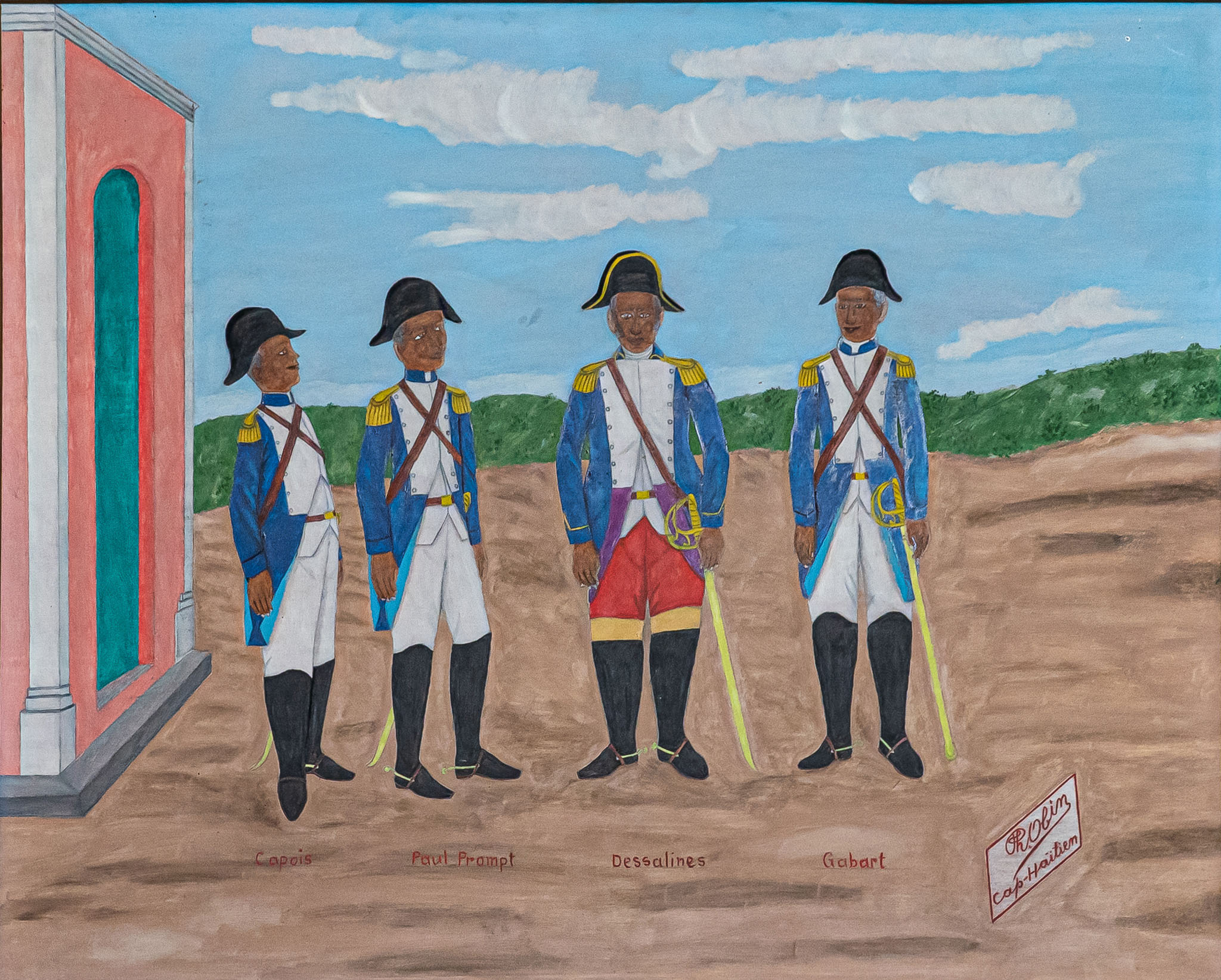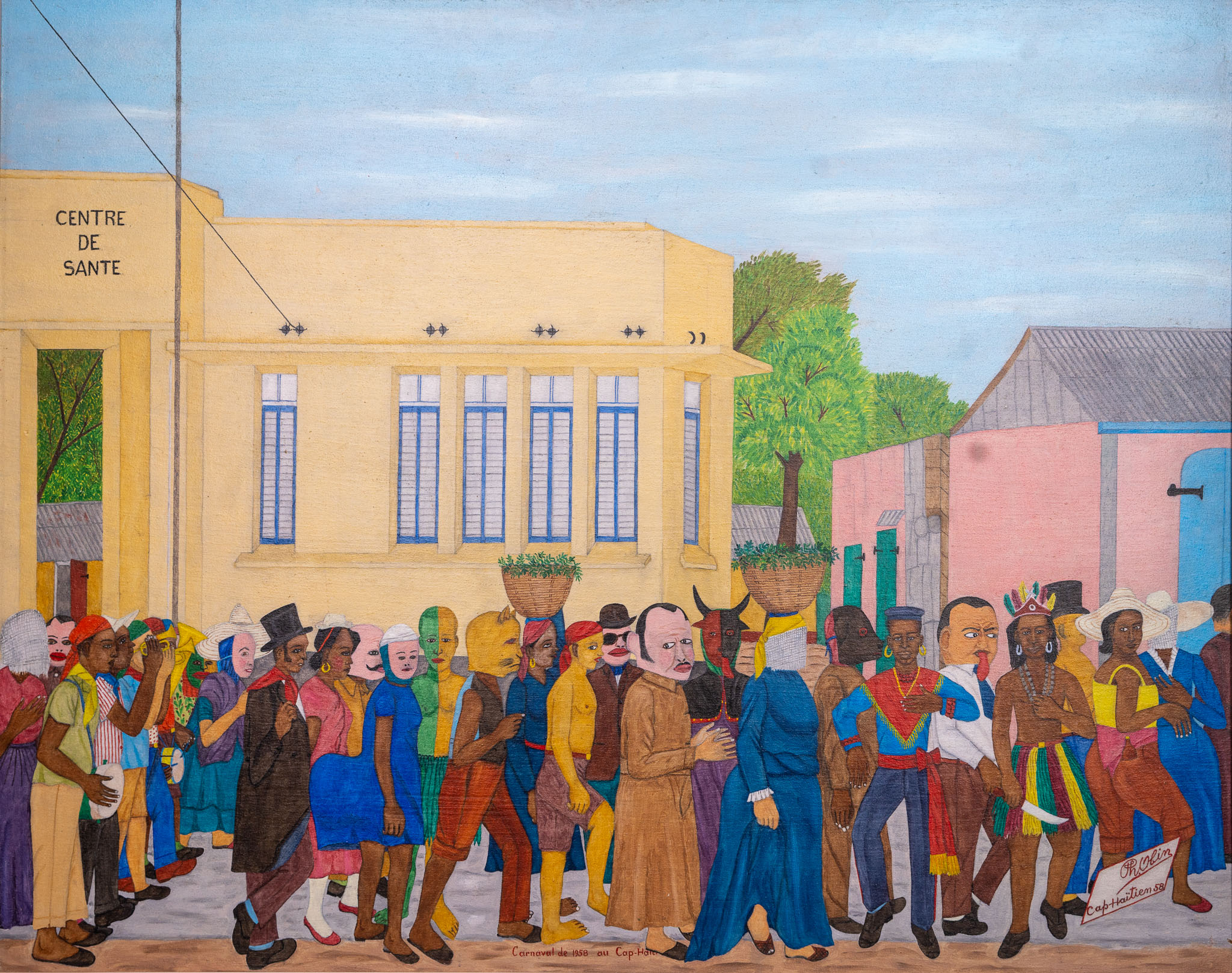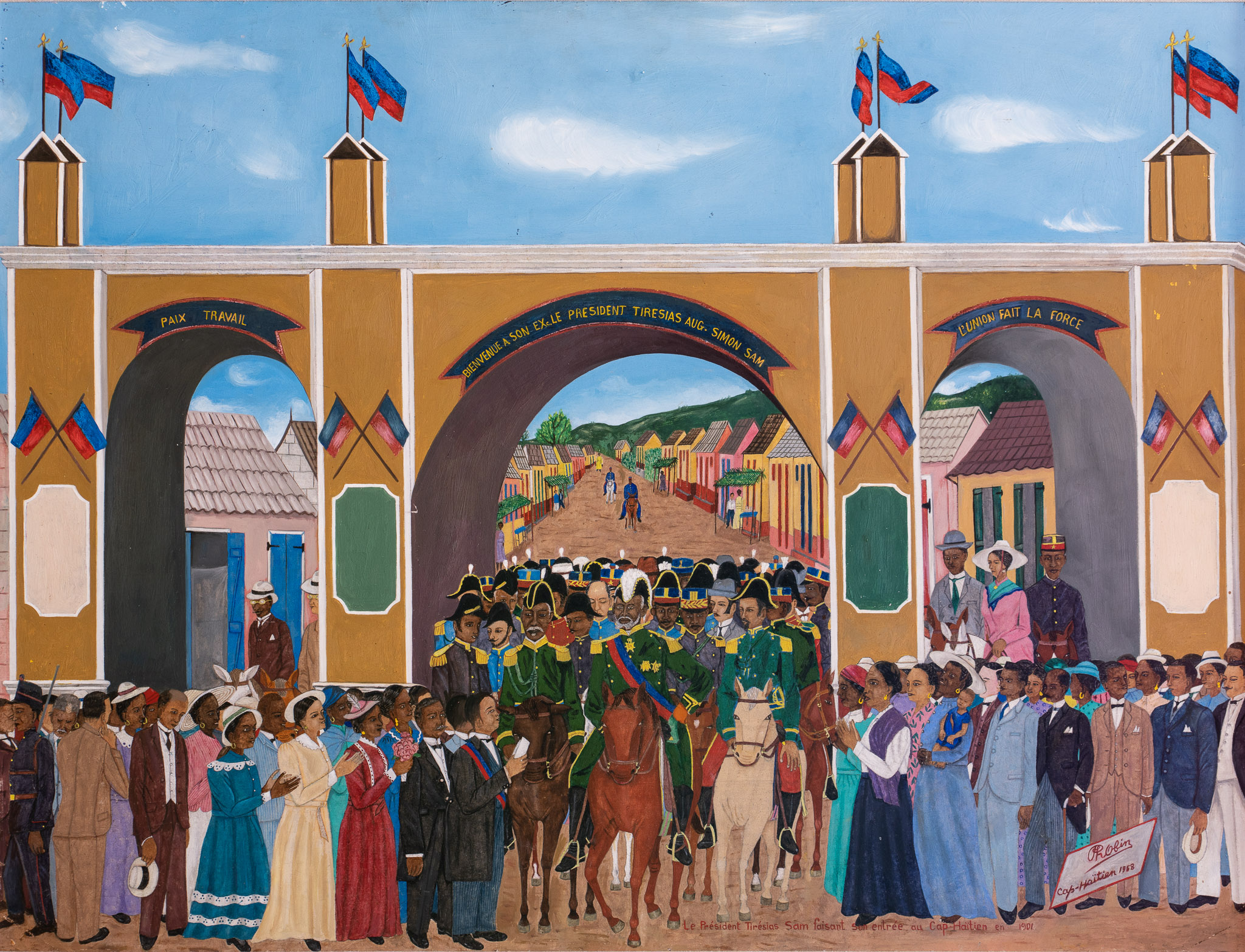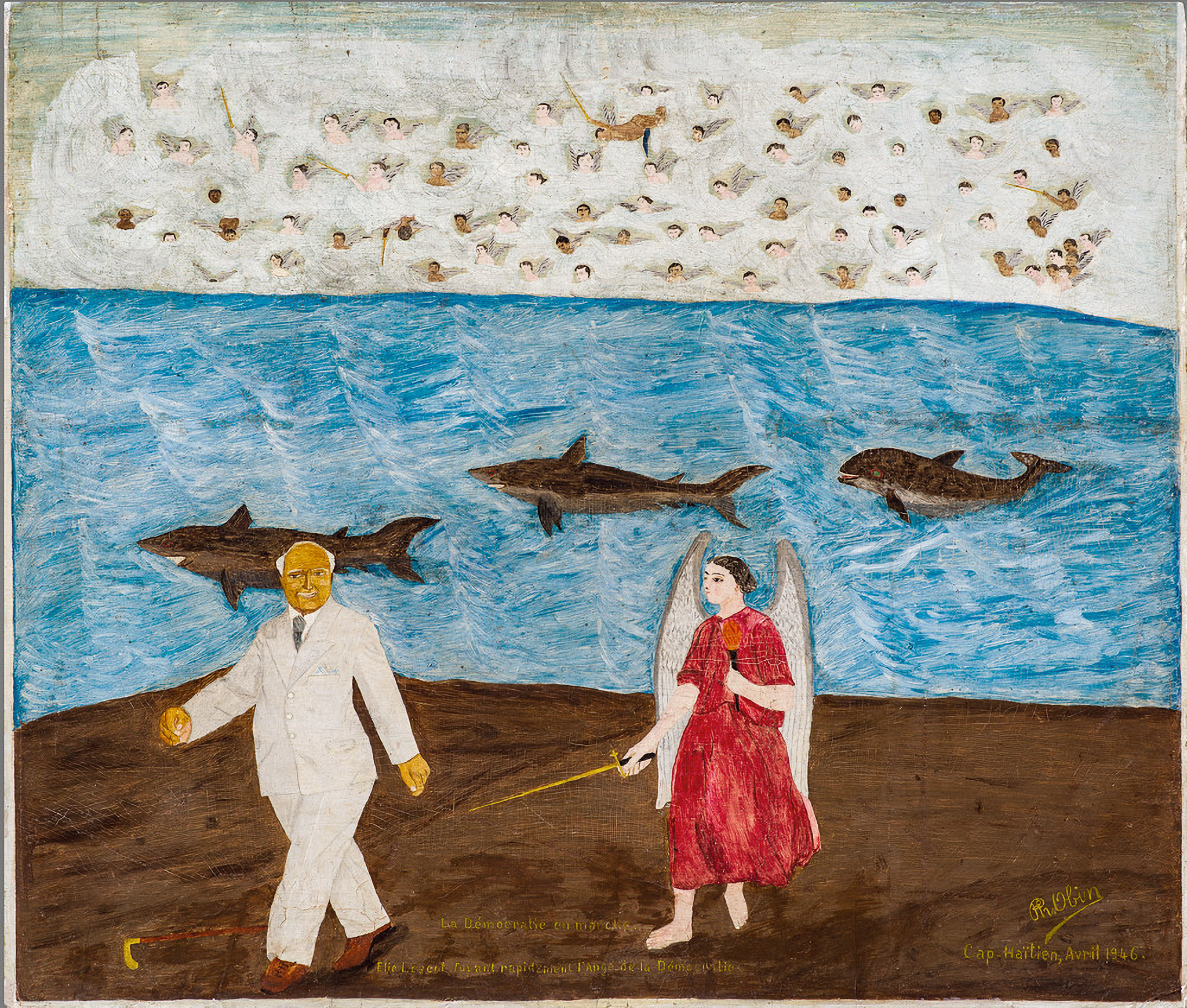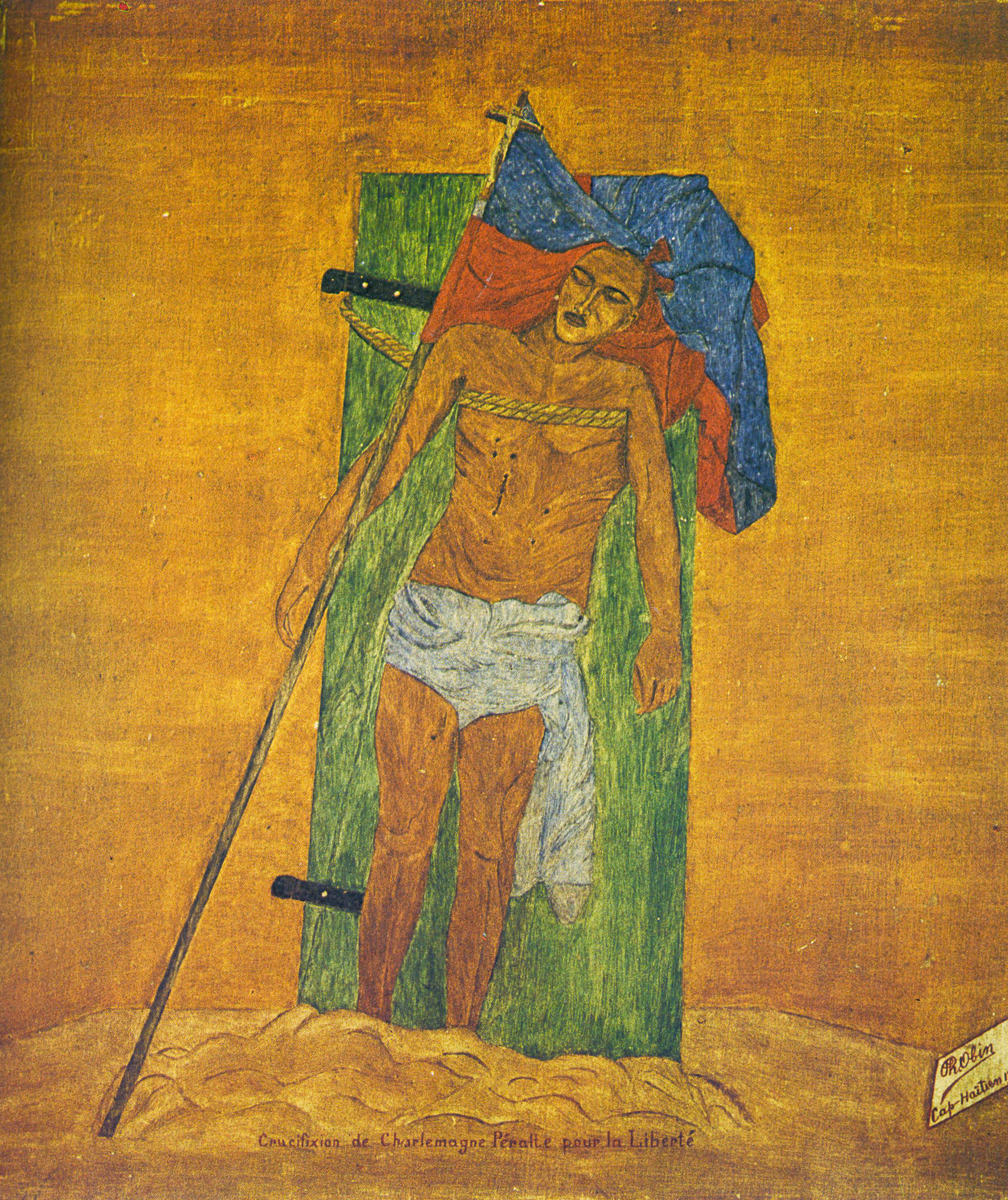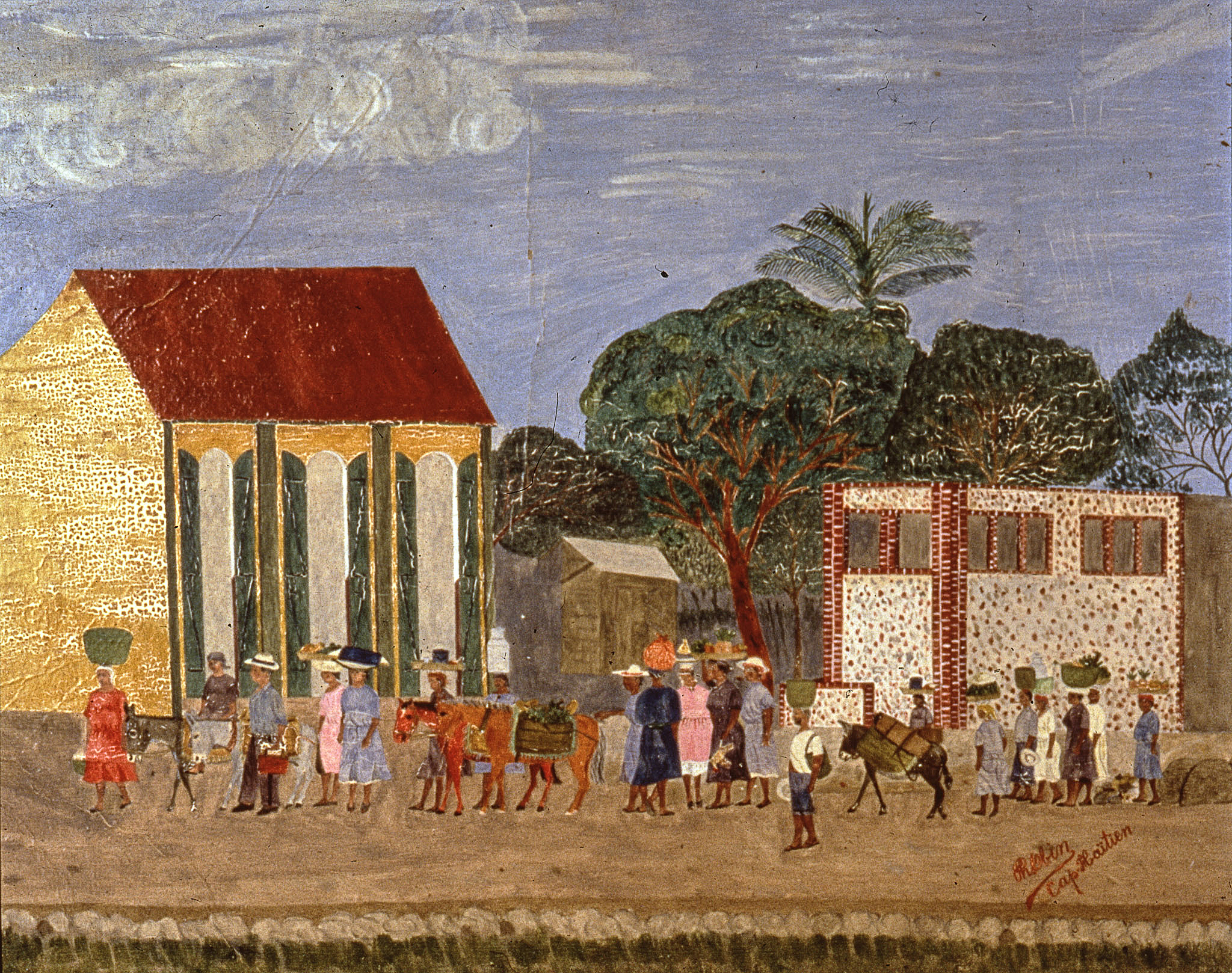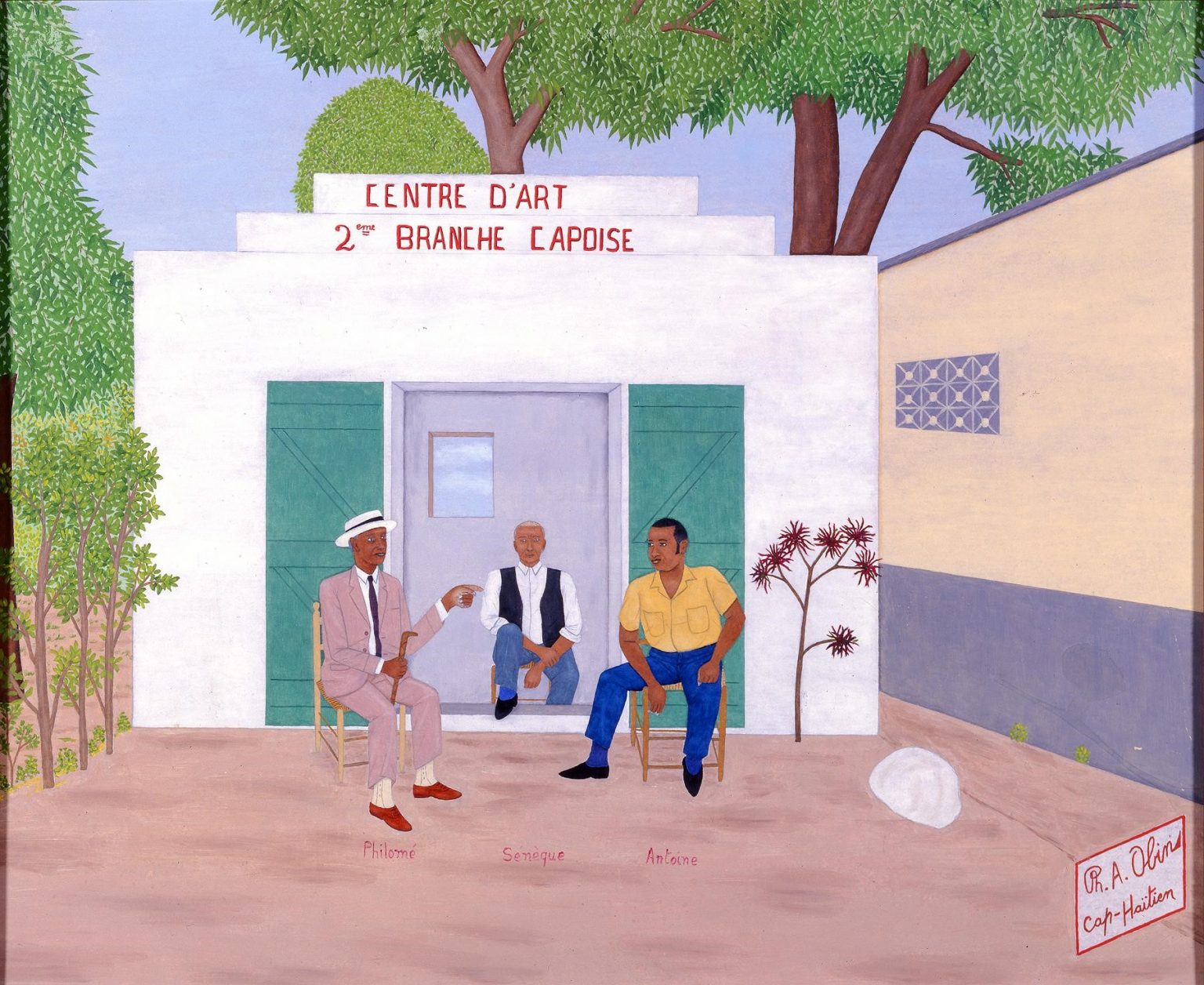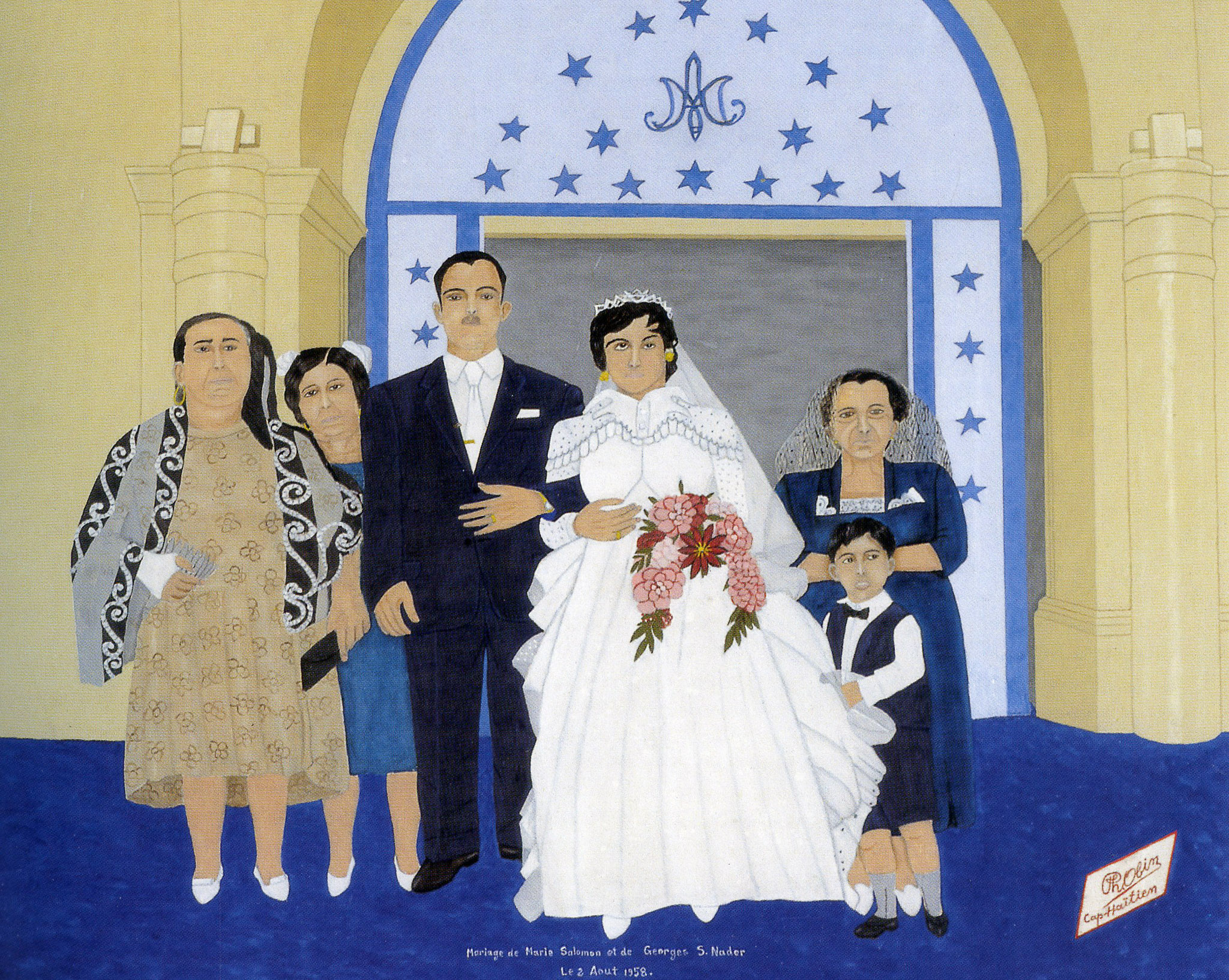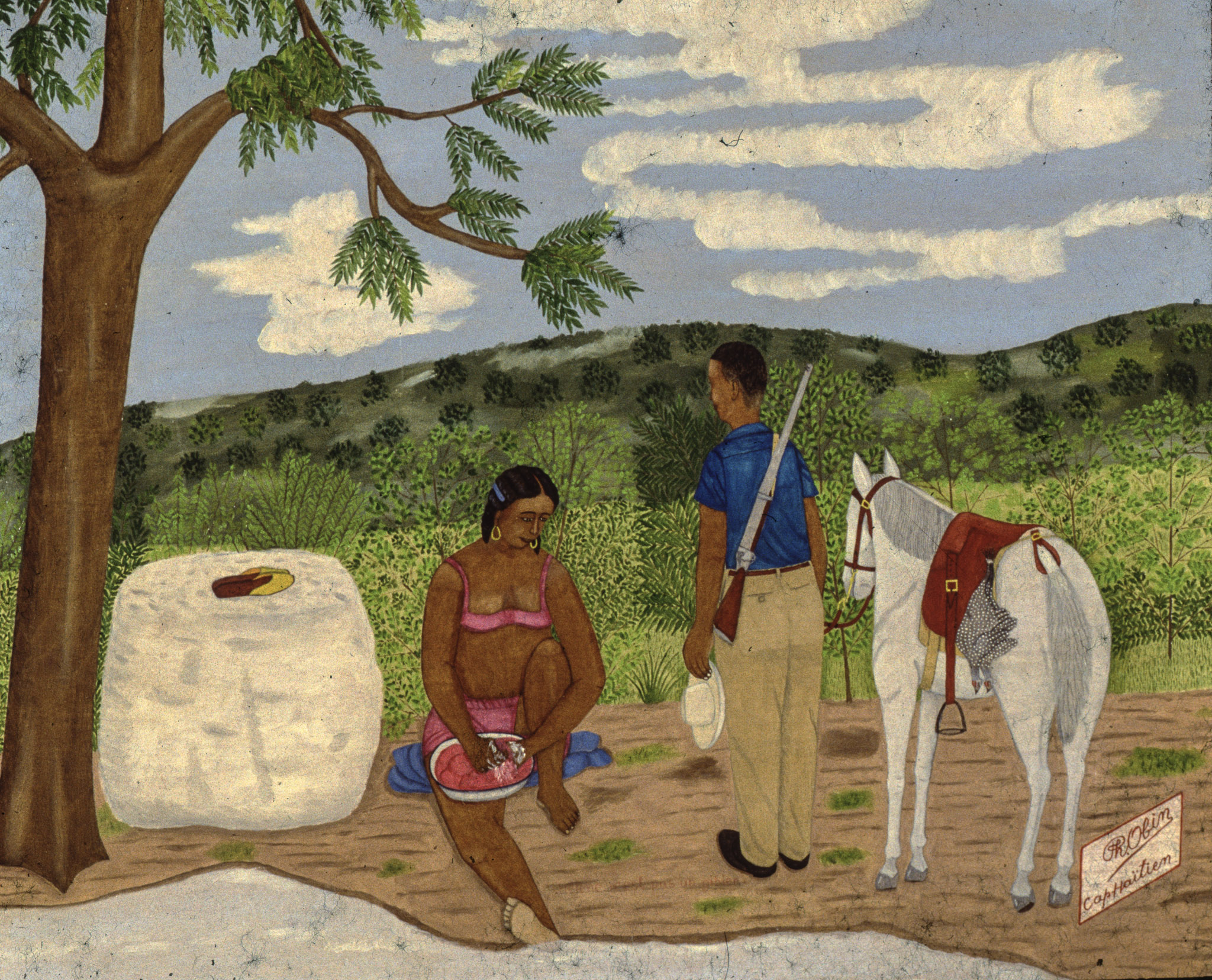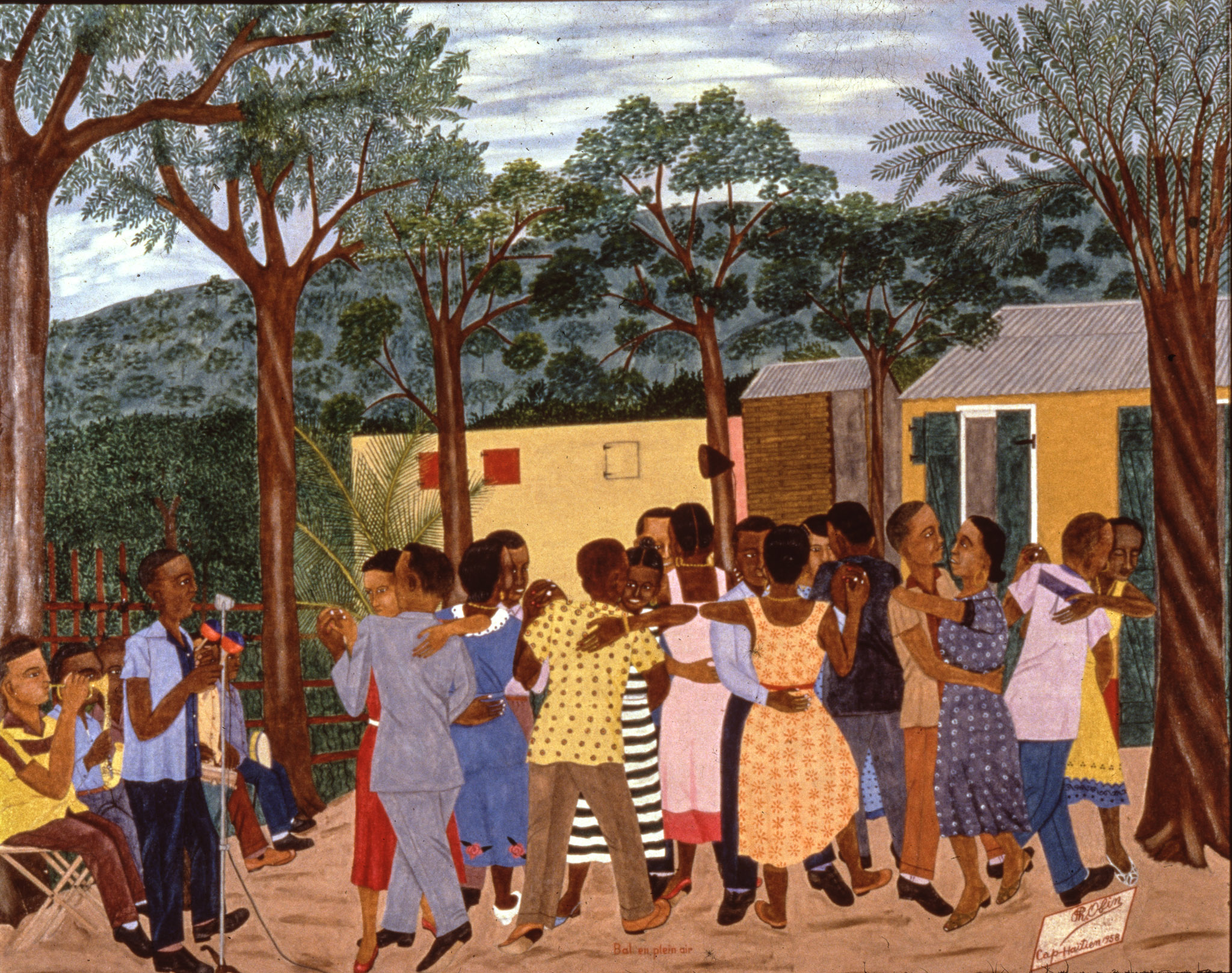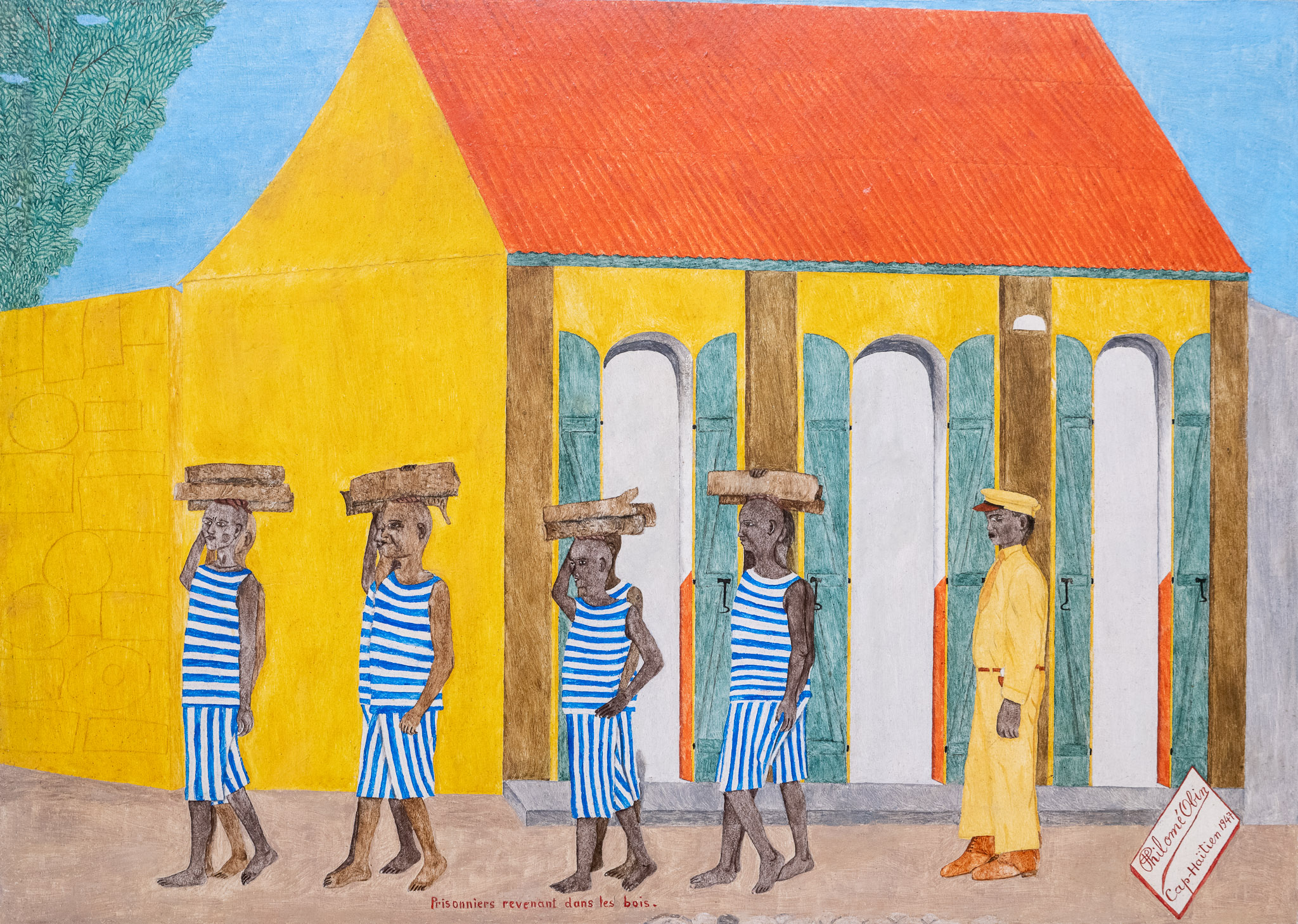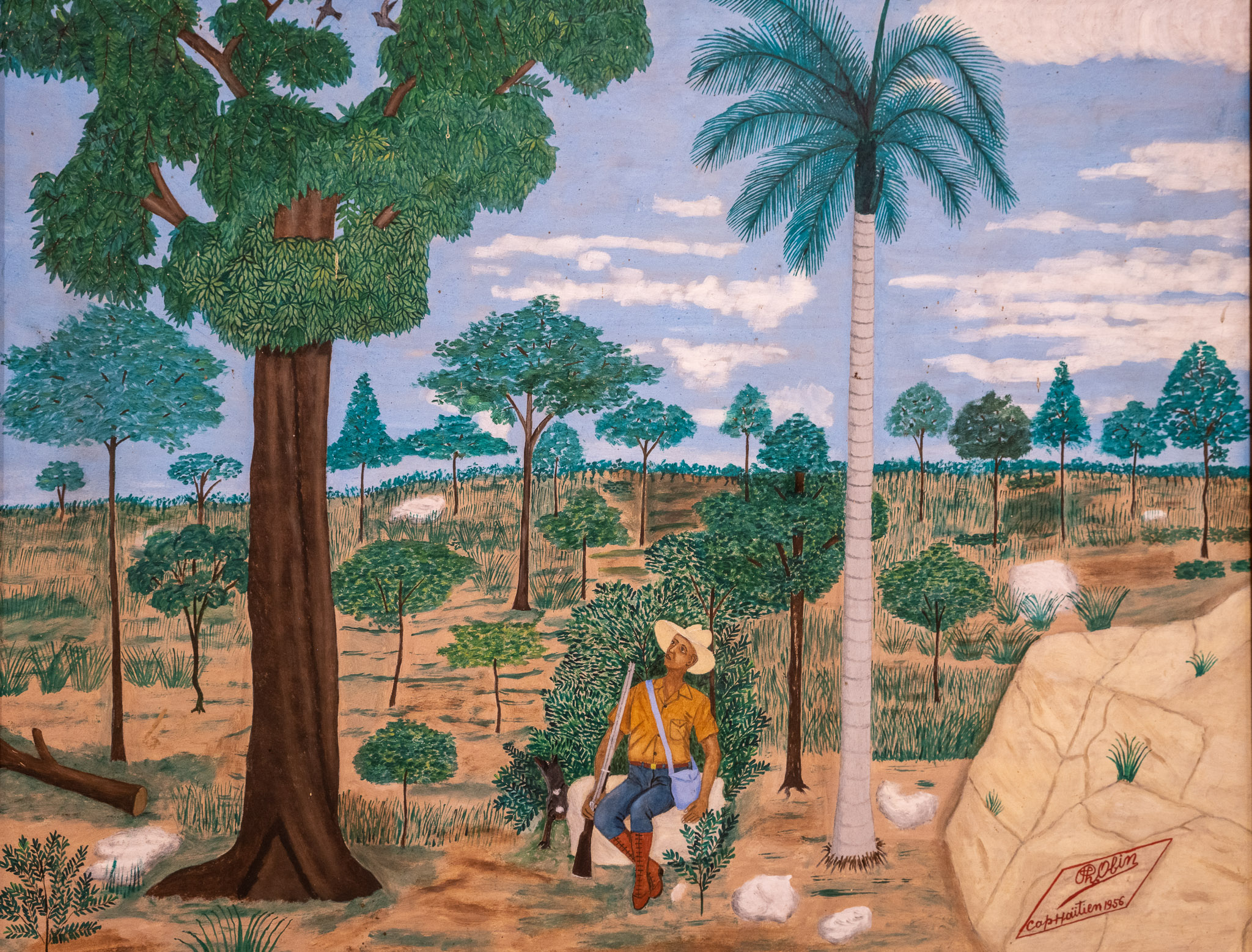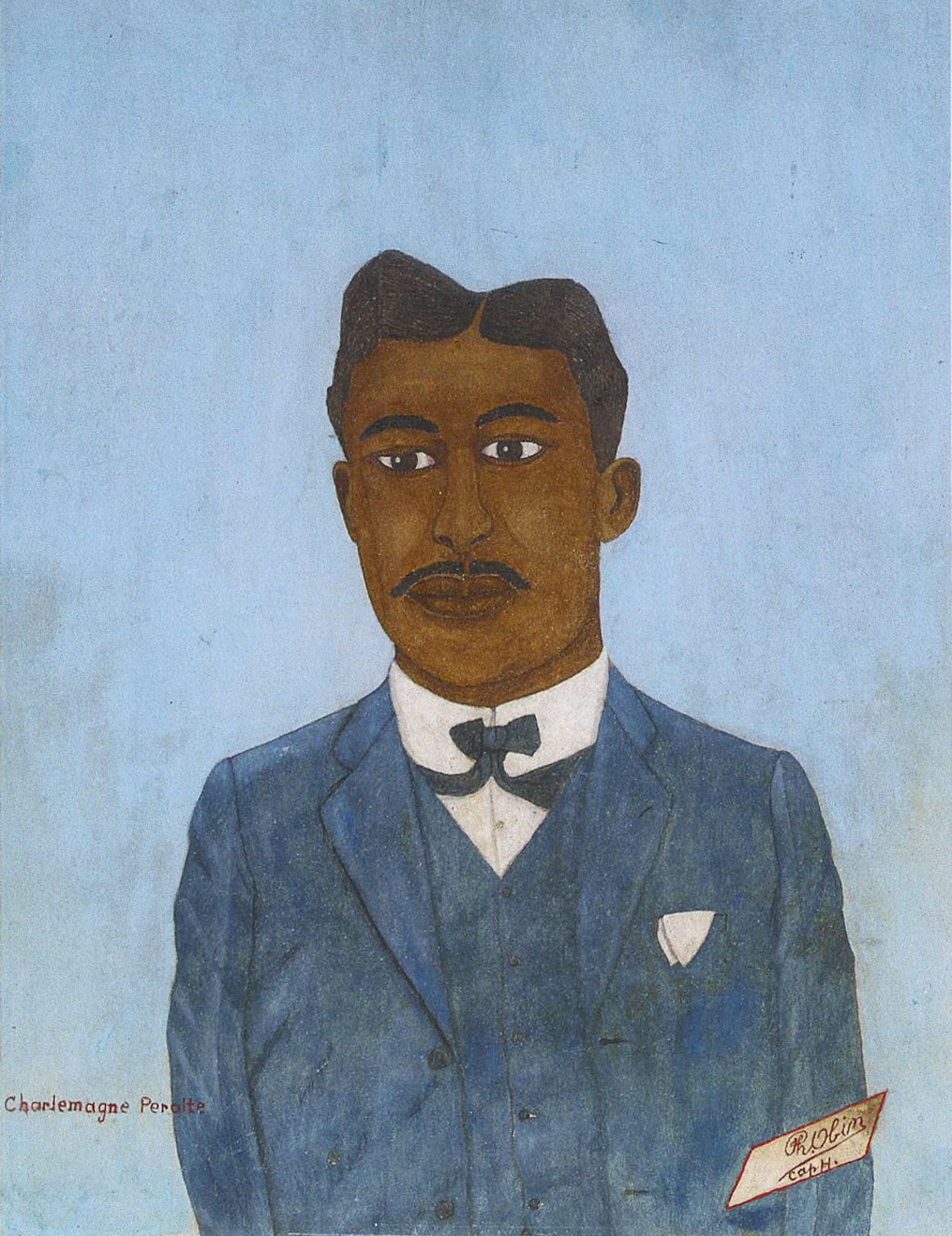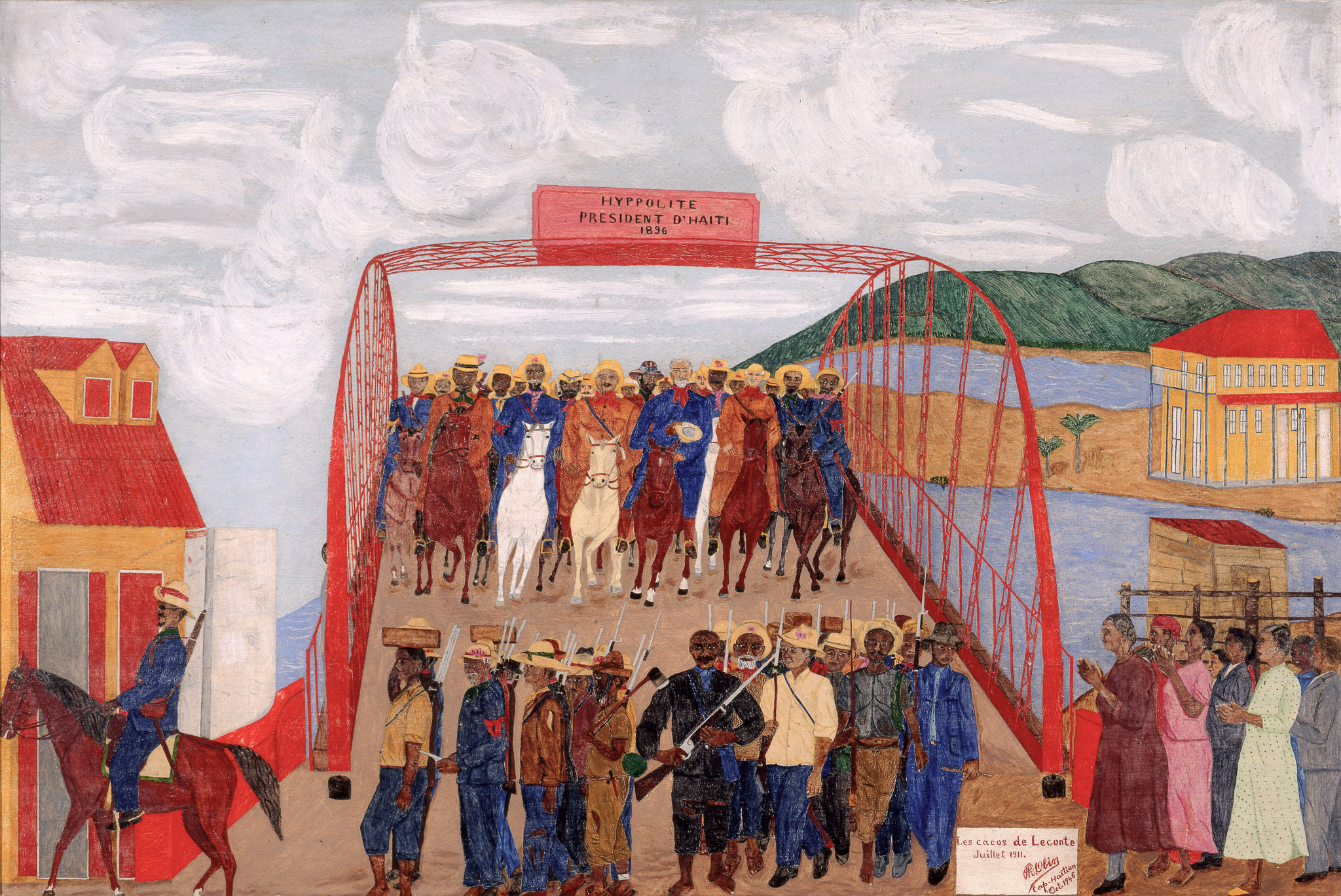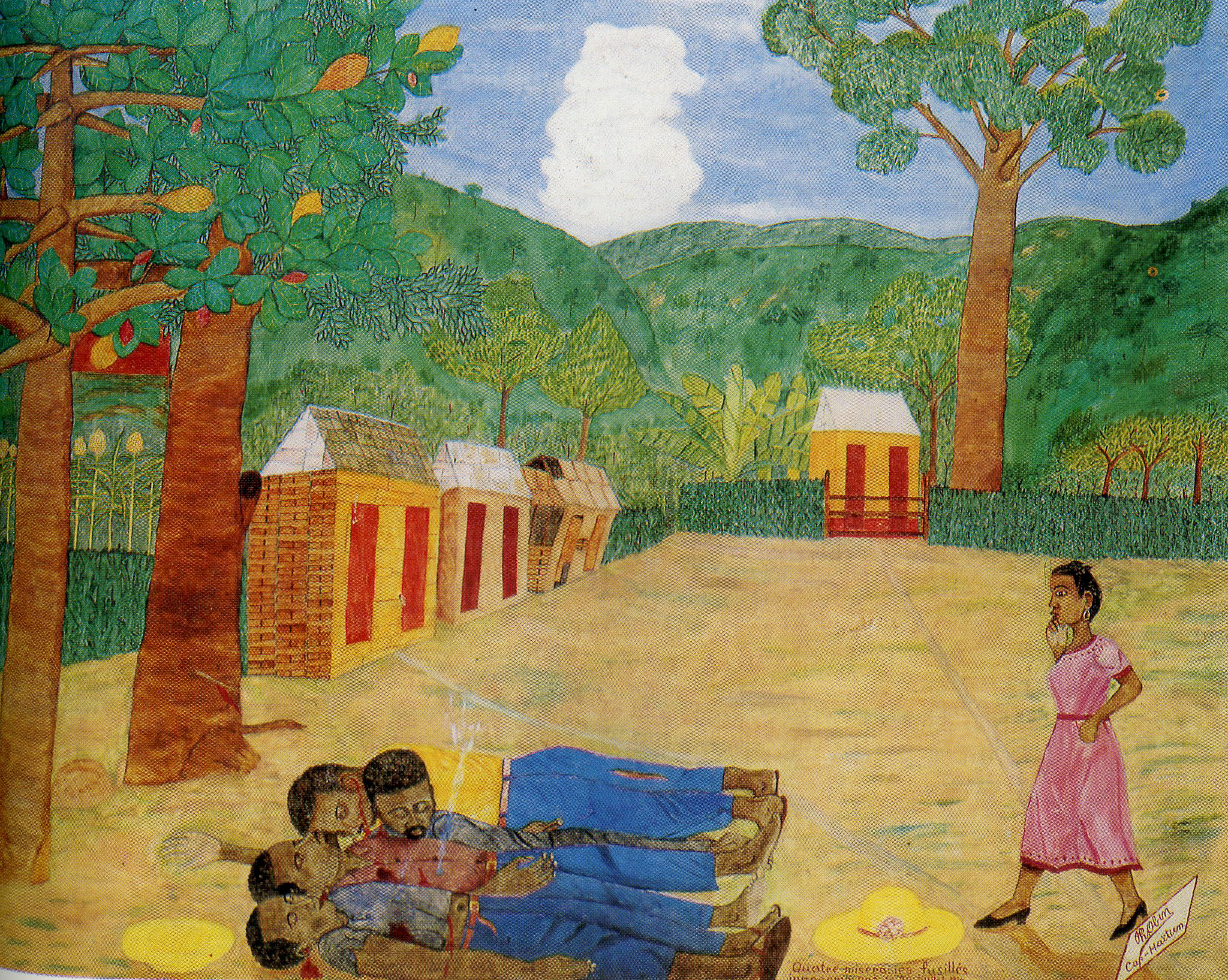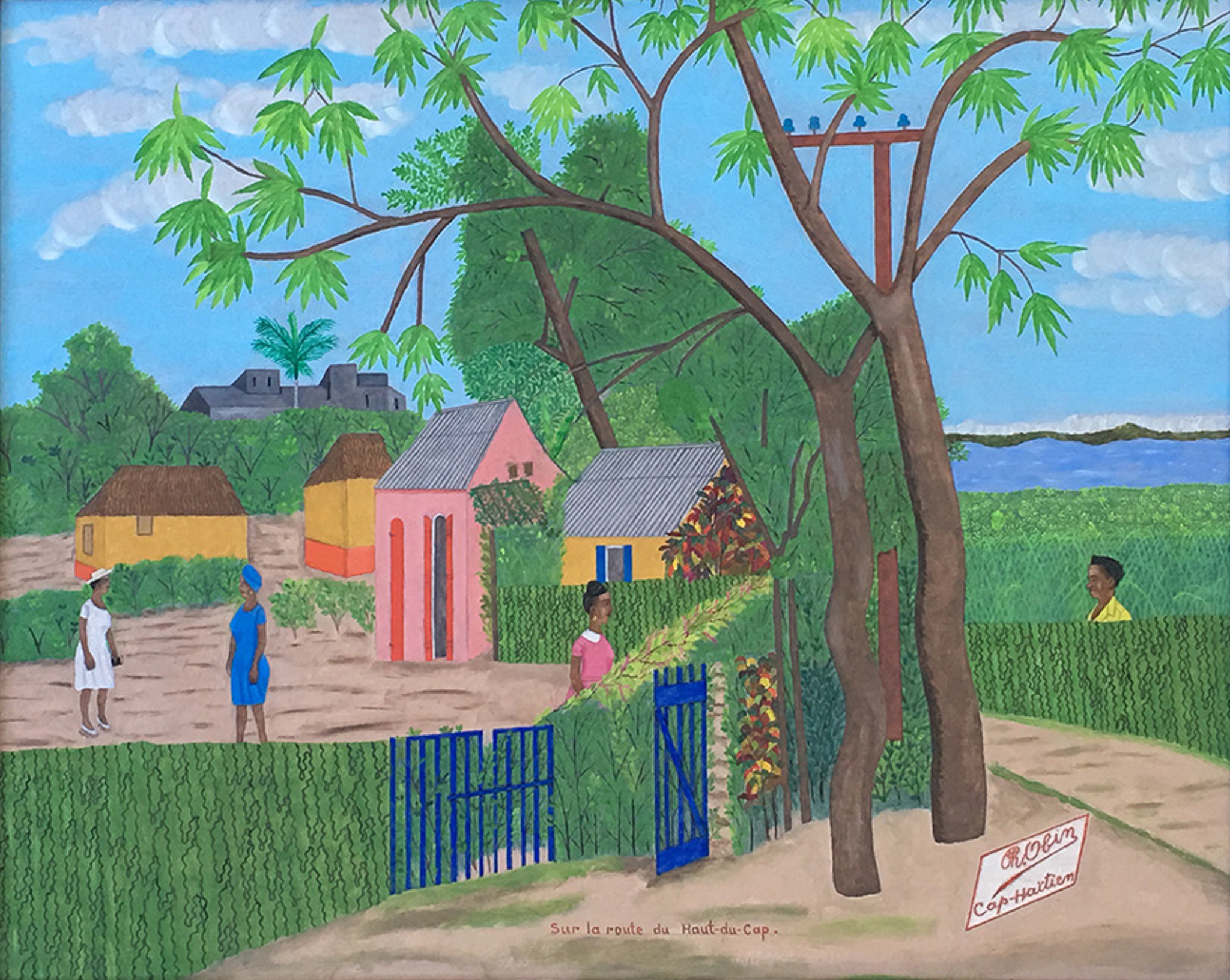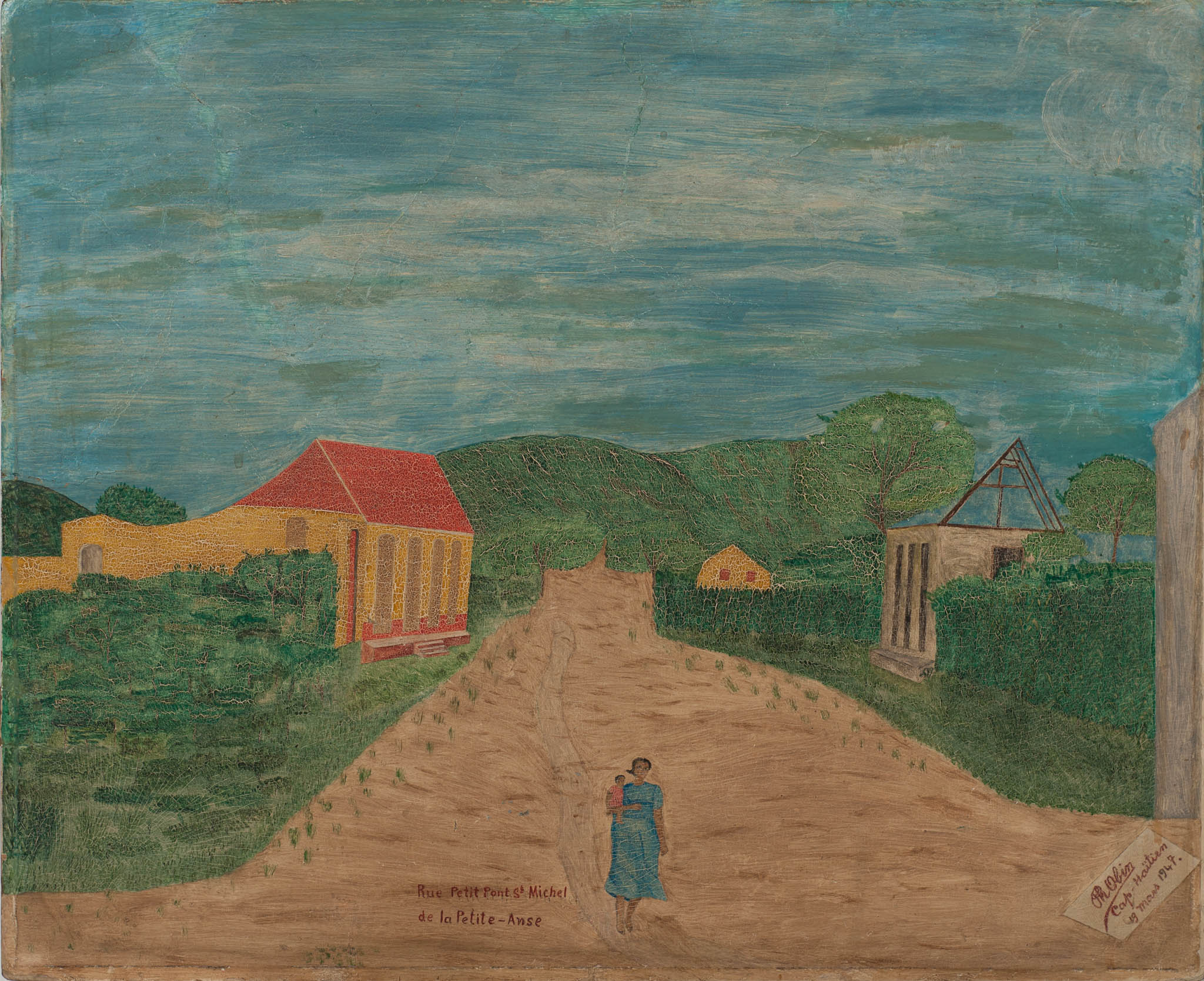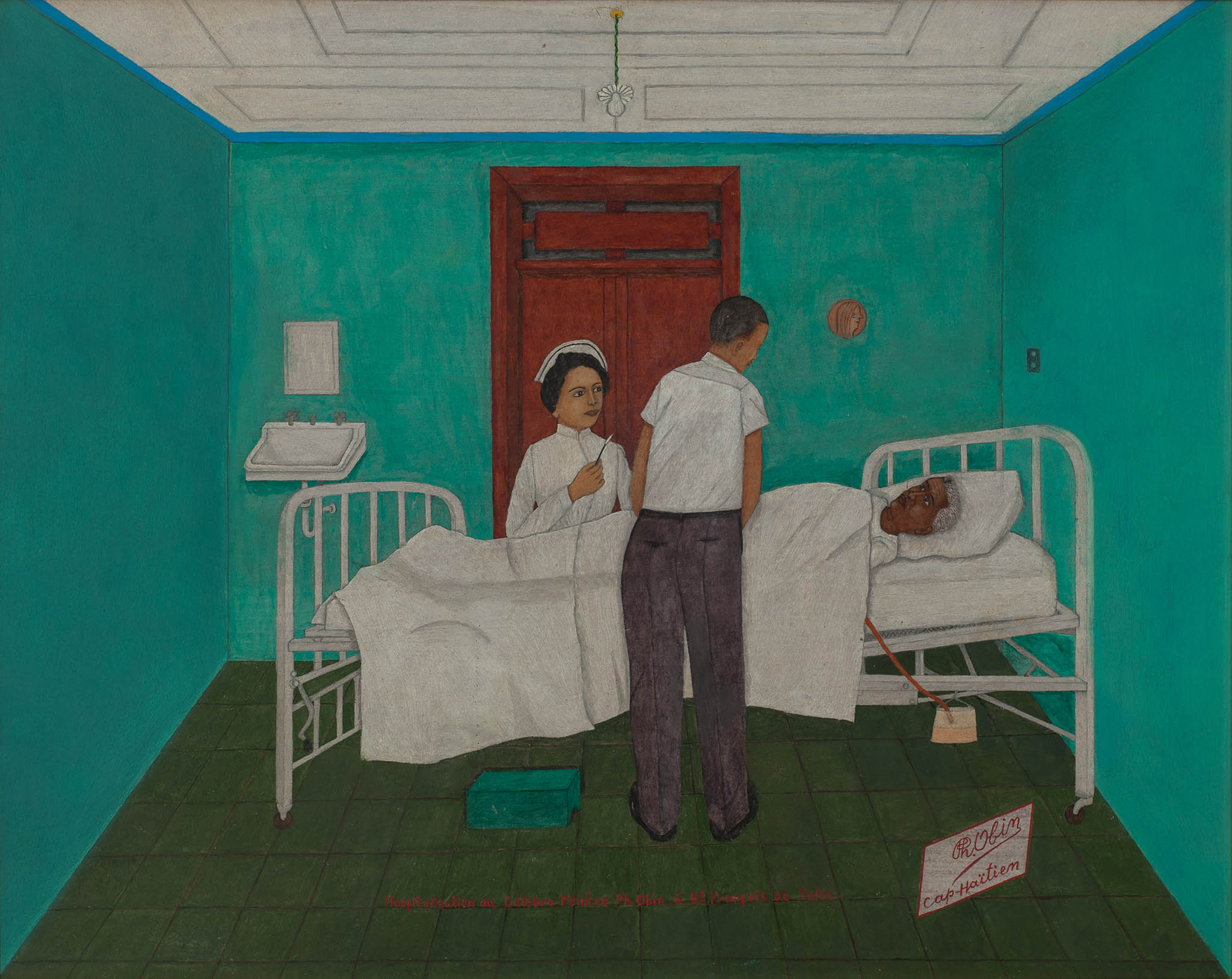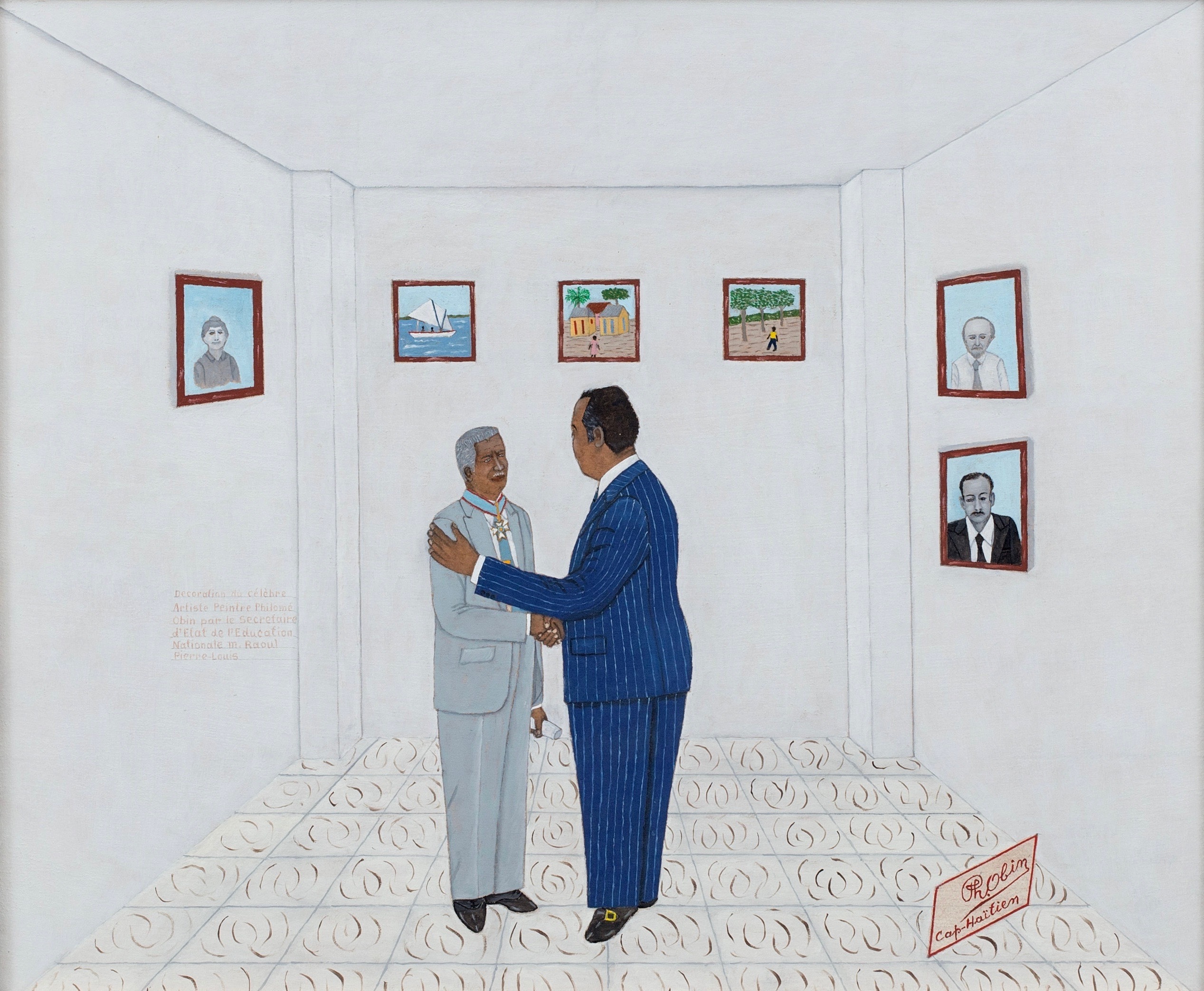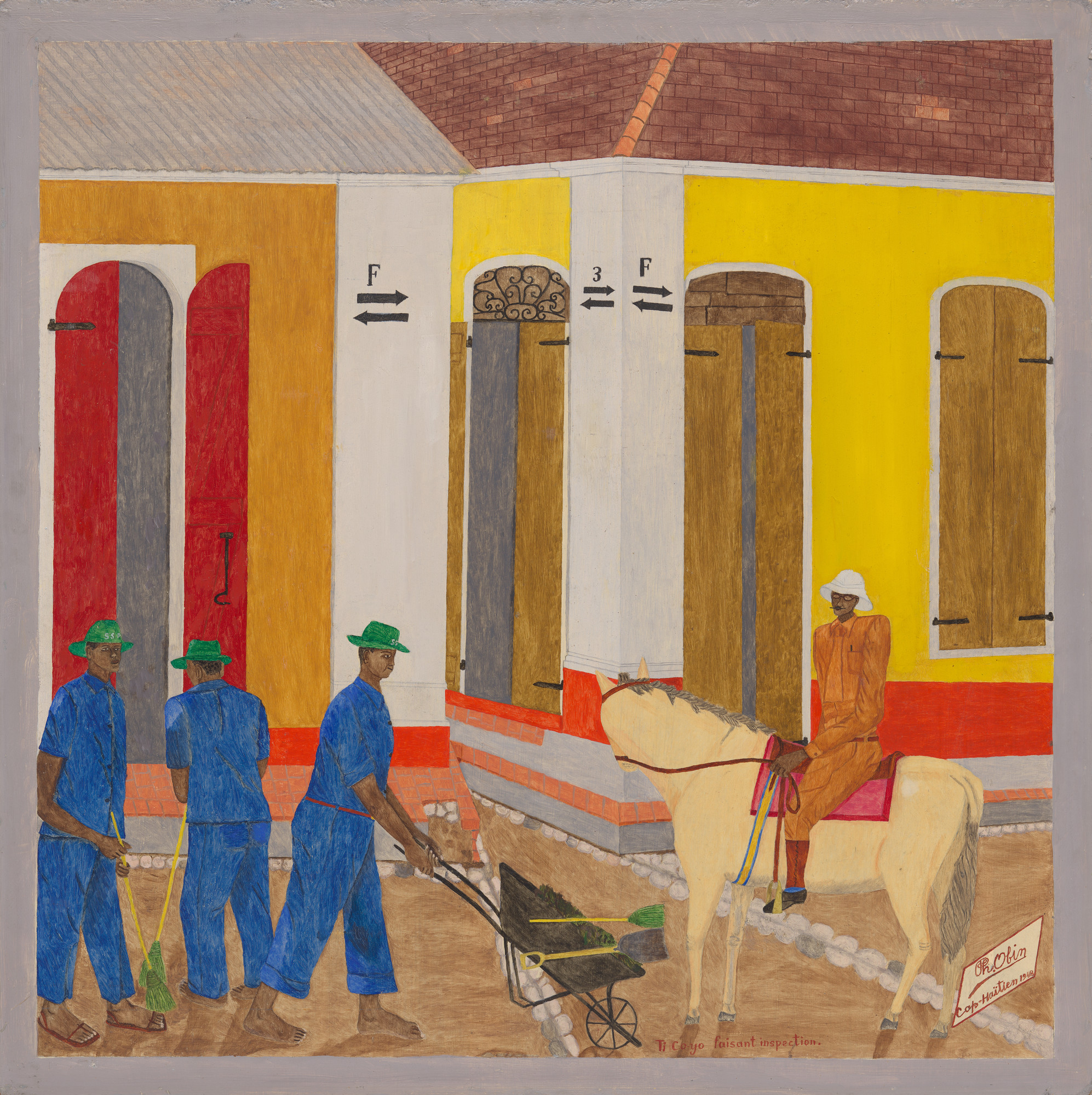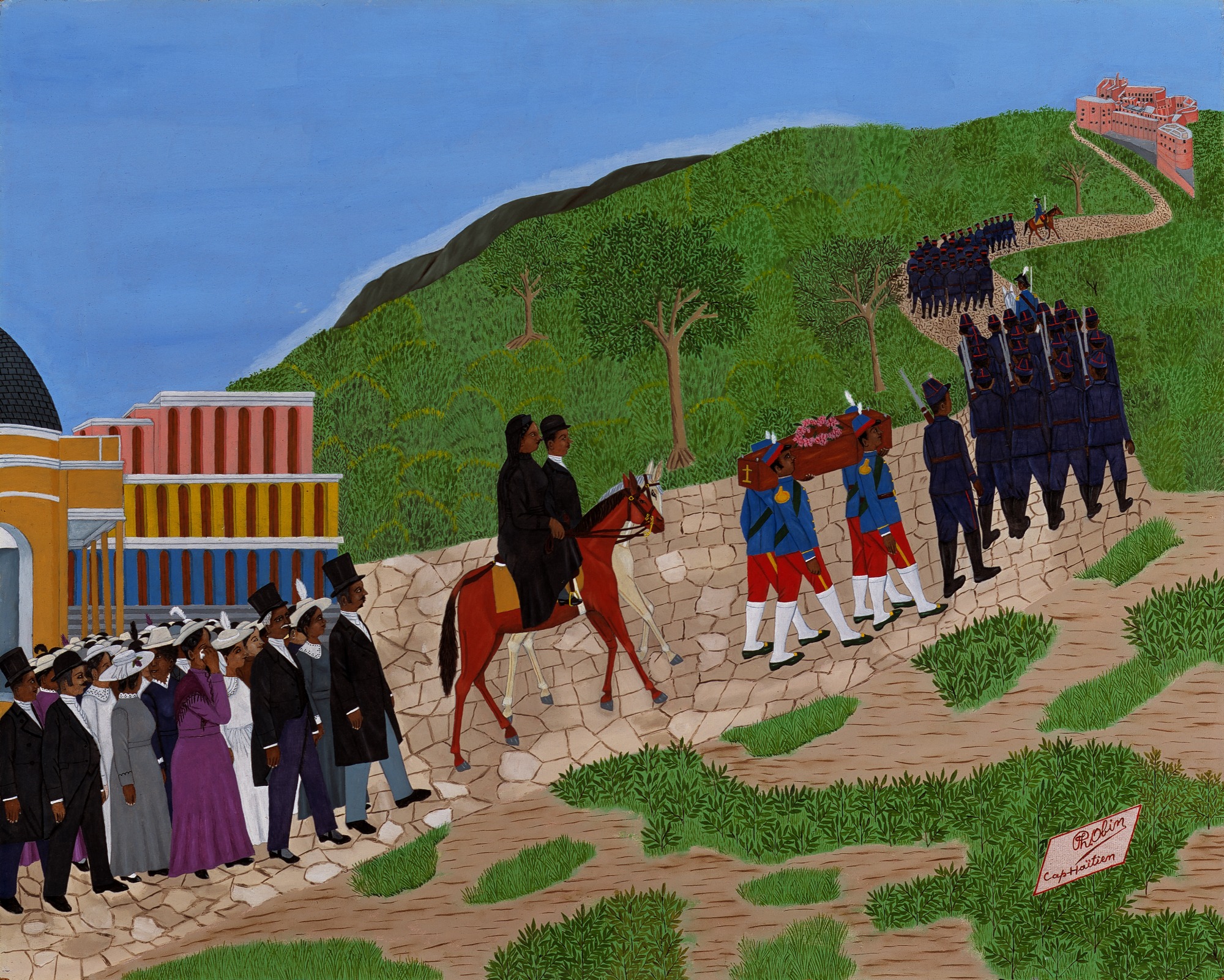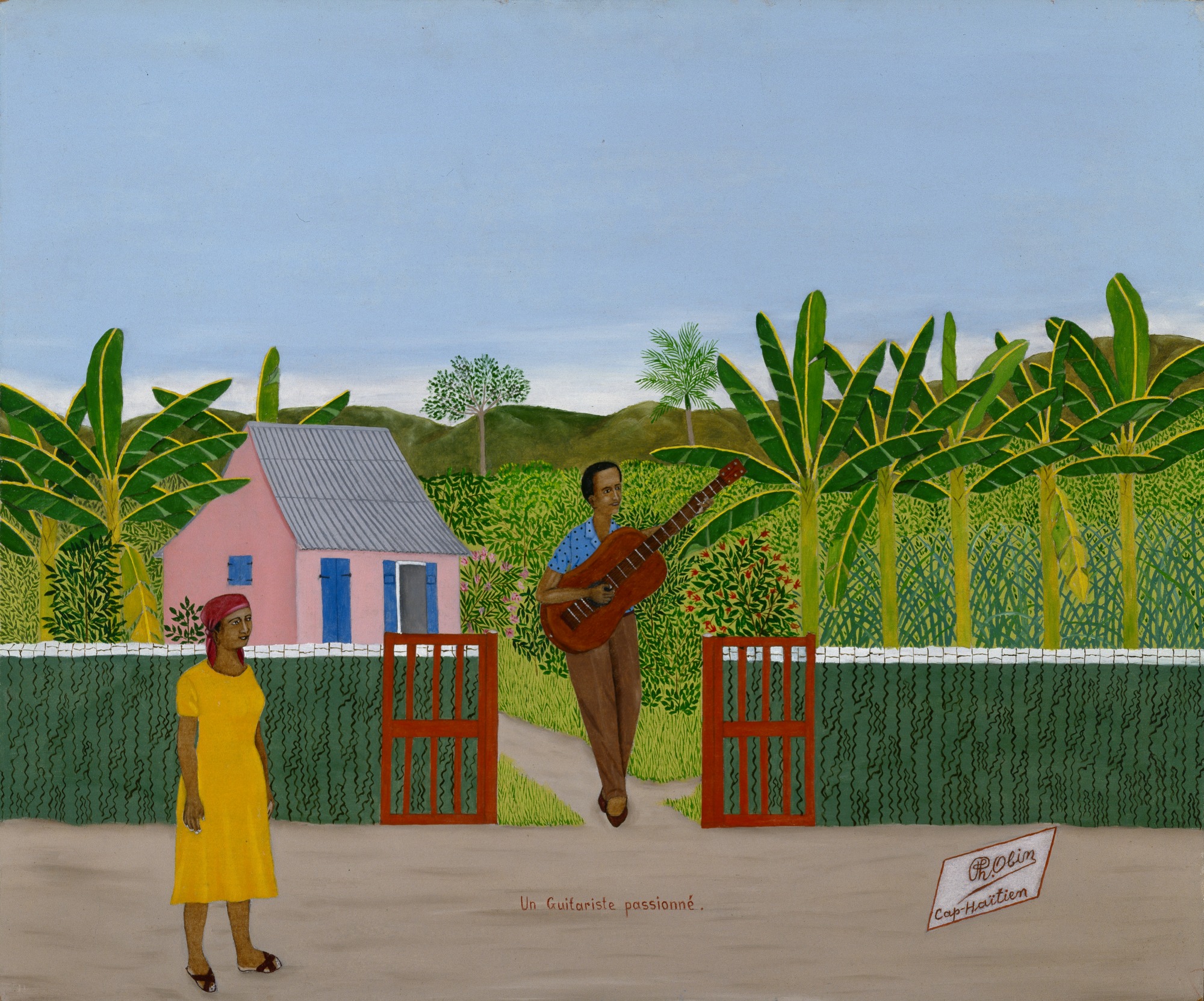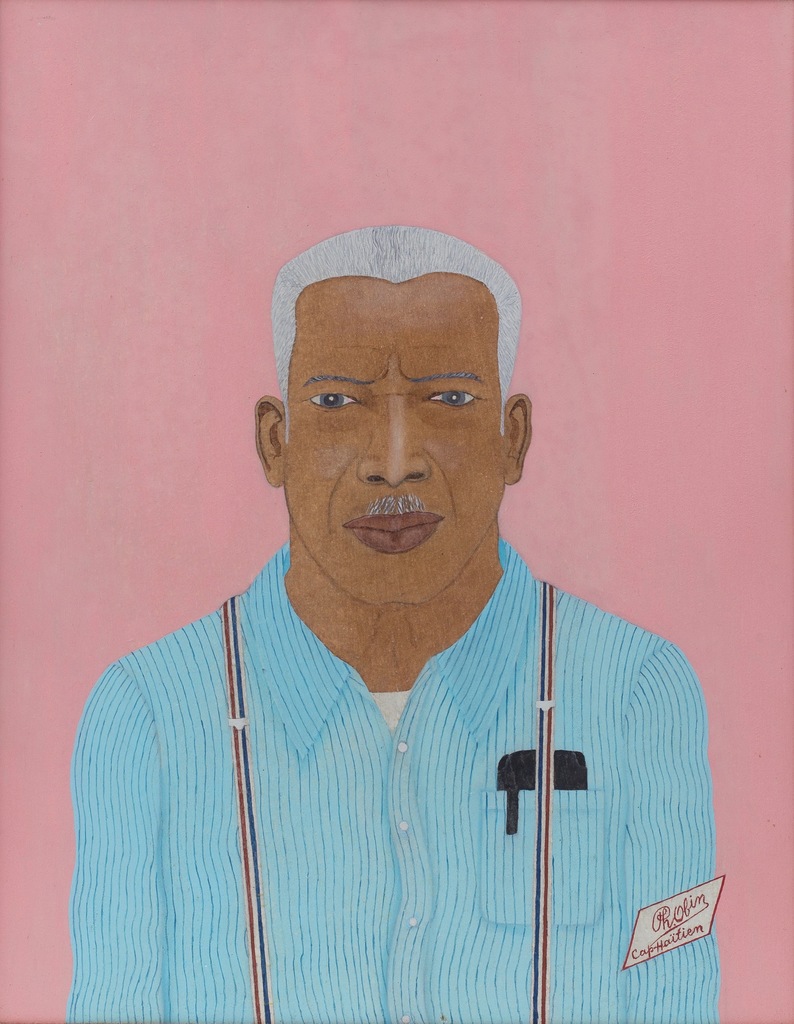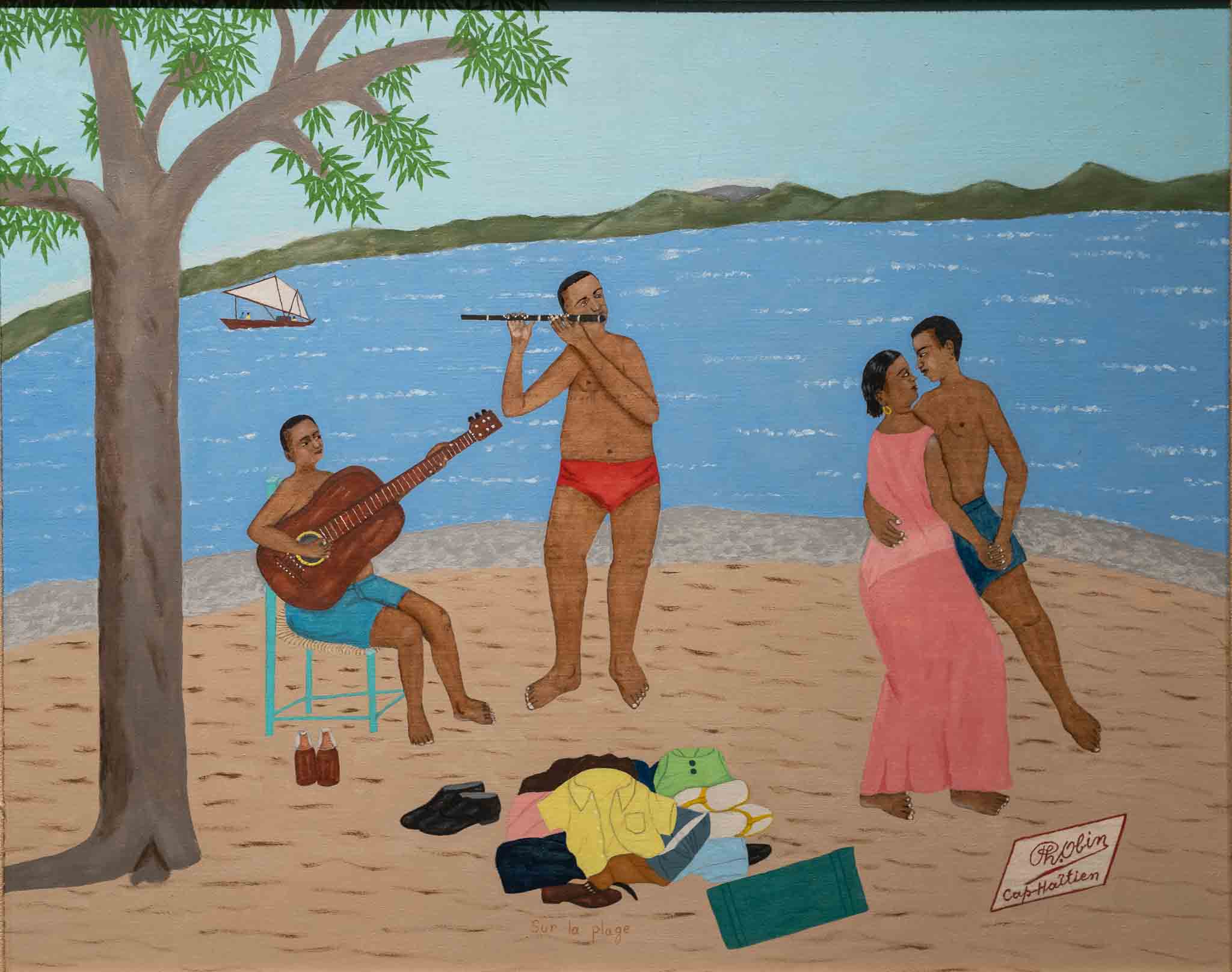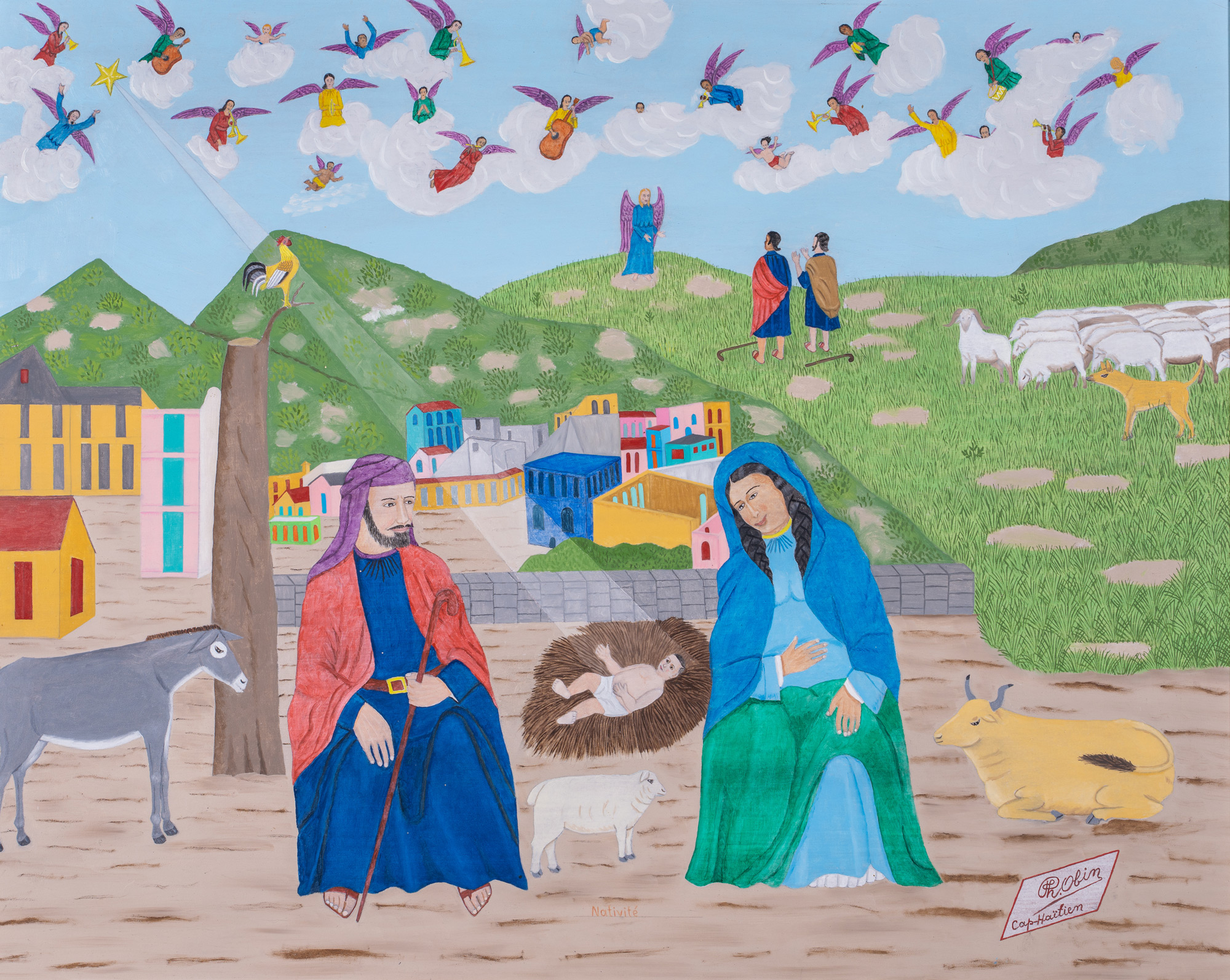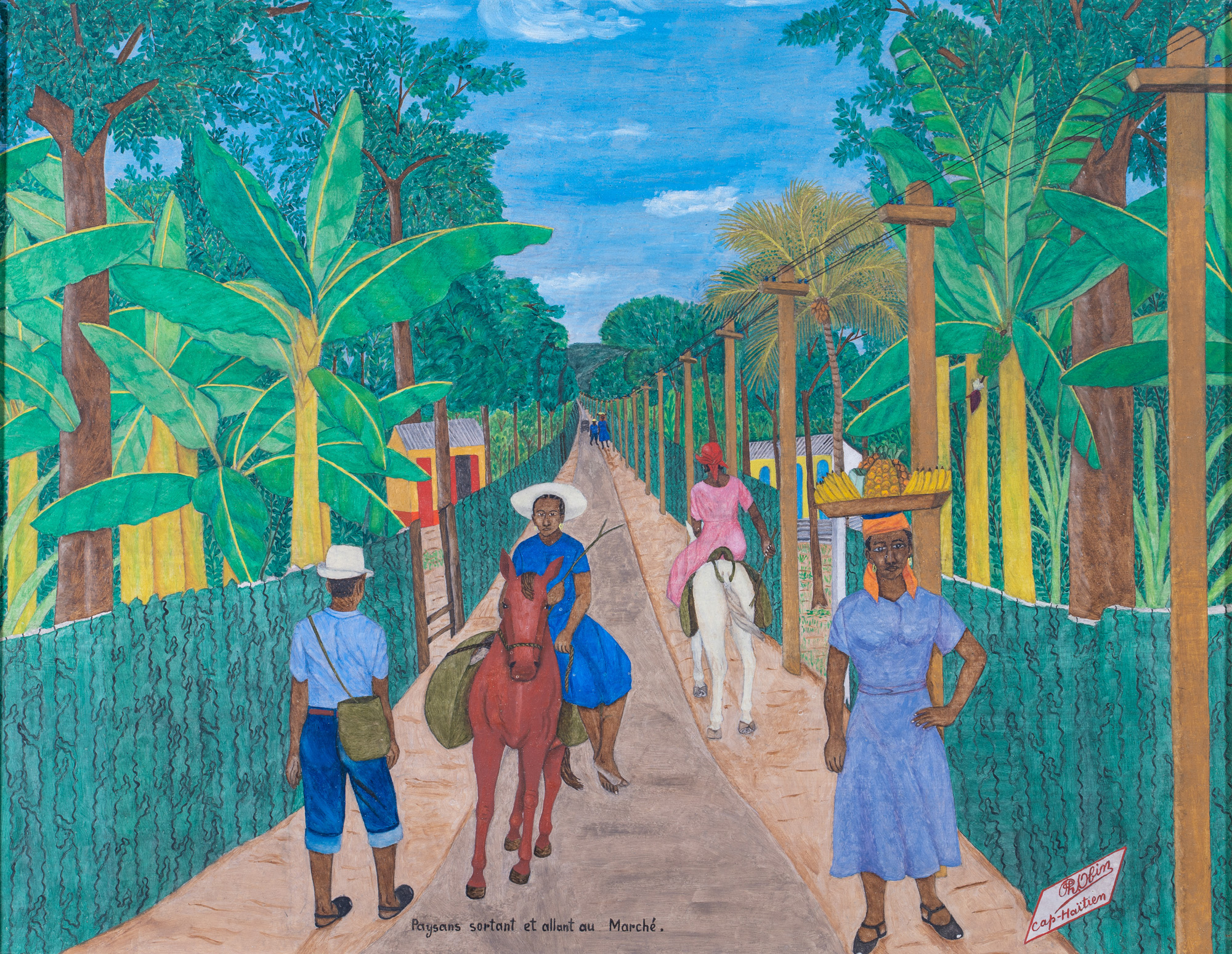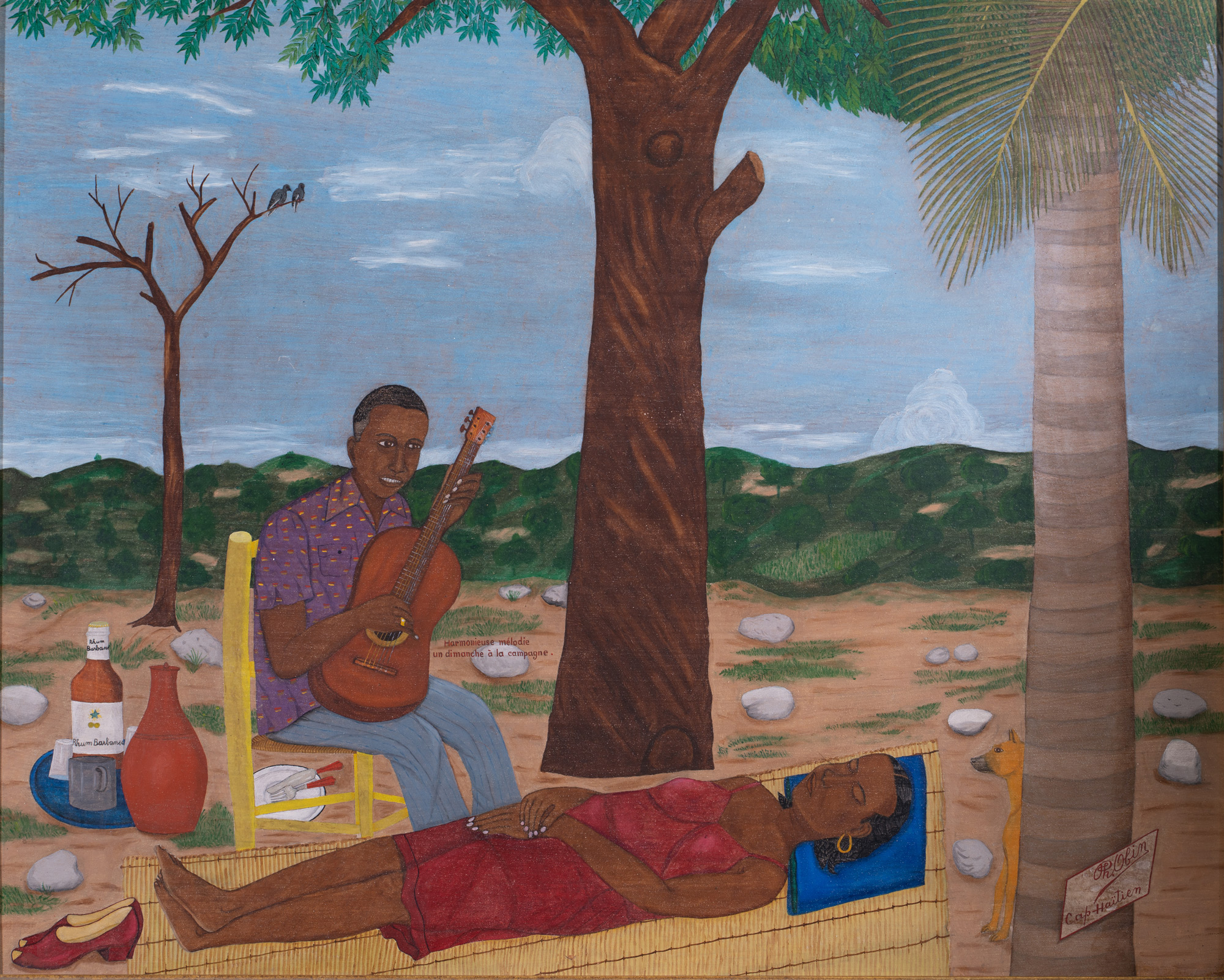
A recognized master in Haitian art history, Obin was born in Cap-Haïtien, where he developed a personal style inspired by this region of northern Haiti. Rendered with precise and meticulous attention to the details of street life, the mountains, village architecture, and its colonial past, it is distinctive as “The Obin style.”
Philomé Obin was a devout Protestant. He received rudimentary instruction in drawing at a young age and produced his first known work—a watercolor of a young man hunting—when he was seventeen years old. He painted on and off with no recognition for over forty years. By the time he sent a painting to DeWitt Peters in 1944, Obin was over fifty-years-old.
The “Obin style” is often described as “magical pseudo-realism.” It is characterized by rows of peak-roofed townhouses with protective overhangs, elongated shuttered doors with long iron hooks, and tiny simplified figures in the foreground.
Obin saw everything precisely as it was: the mountains behind Cap-Haïtien, the glaring sun in the streets, the coffee-colored Capois elite, the arcades, and the iron balconies. He depicted the bearded, turn of the century revolutionaries with their flashing black eyes returning from the hills on their white horses to take advantage of the latest political crisis. He represented the Cacos—the name given to the Haitian rebels during Haiti’s U.S. occupation, 1915-1934—putting up courageous battles against the U.S. Marines. He saw inspiration in the Catholic convents, Masonic lodges, Mardi Gras masqueraders, and military parades.
In 1938 the Masonic Lodge at Limonade paid him six dollars for a group of heraldic panels. In 1943 Obin painted several religious pictures for Masonic Lodge No. 6, and in 1944 he sent President Elie Lescot a painting of Roosevelt, Churchill, and Stalin, an unacknowledged gift. That same year, Obin shifted his waning hope to be an artist in the direction of the newly opened Le Centre d’Art and wrote on his blackboard, “Dear G-d, the year 1944 was a bad one for Philomé Obin. Please try and make the year 1945 a better one for him.” In 1945, five months after DeWitt Peters received his painting of Franklin D. Roosevelt. Obin was put on a monthly salary and organized a branch of Le Centre d’Art in the North.
In 1976 the president of Haiti, Jean-Claude Duvalier, awarded Obin with the highest government honor. More than a dozen of Obin relatives became painters. His legacy was also measured in the two murals he painted for Holy Trinity Cathedral in Port-au-Prince, “The Crucifixion” and “The Last Supper.” Unfortunately, both murals were destroyed during the 2010 earthquake.
Sources: Rodman, Selden. Where Art Is Joy. Haitian Art: The First Forty Years. New York: Ruggles de Latour, 1988. p. 71-96
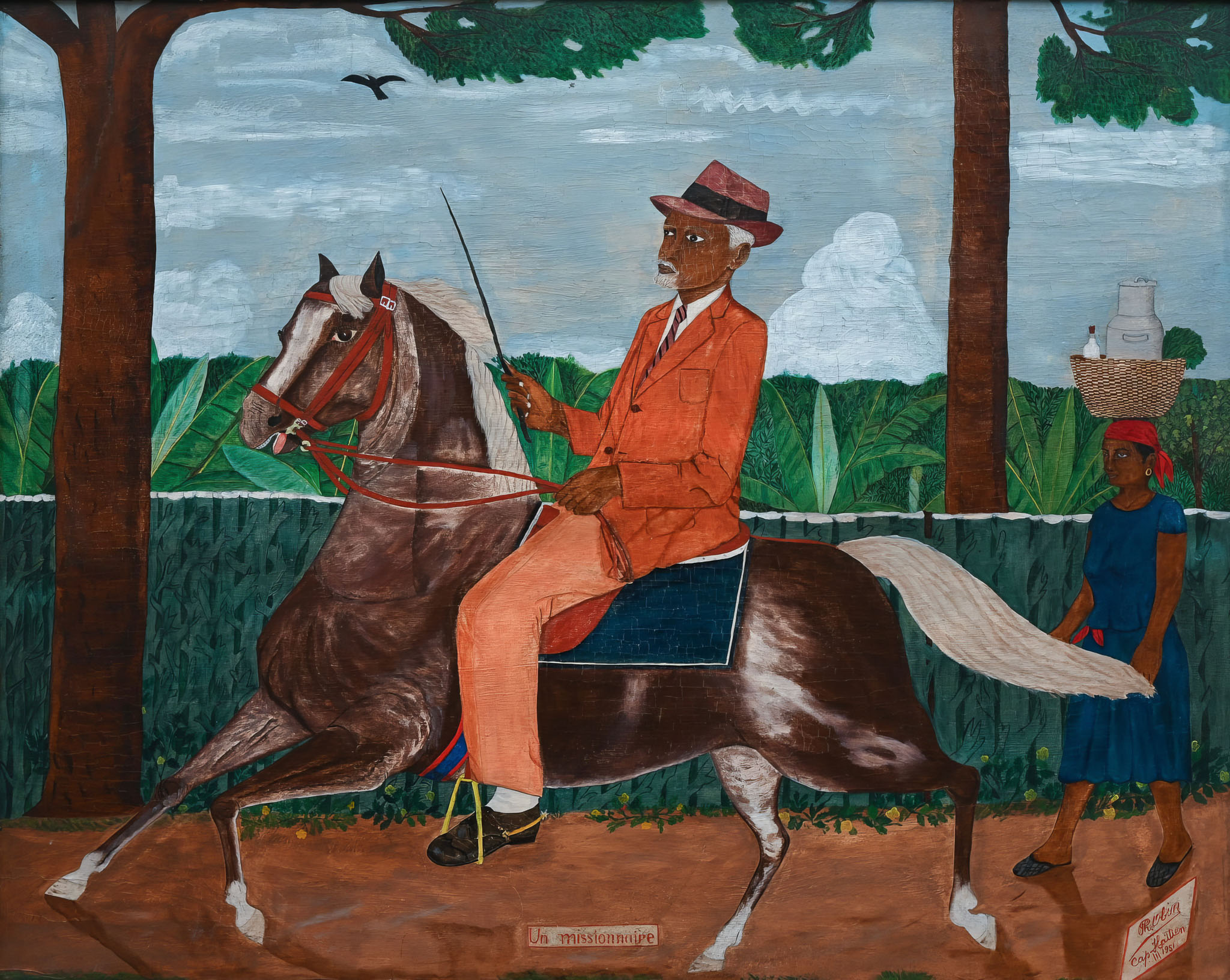
Un Missionnaire, 1952
View
Les vendeurs chasses du Temple, 1958
View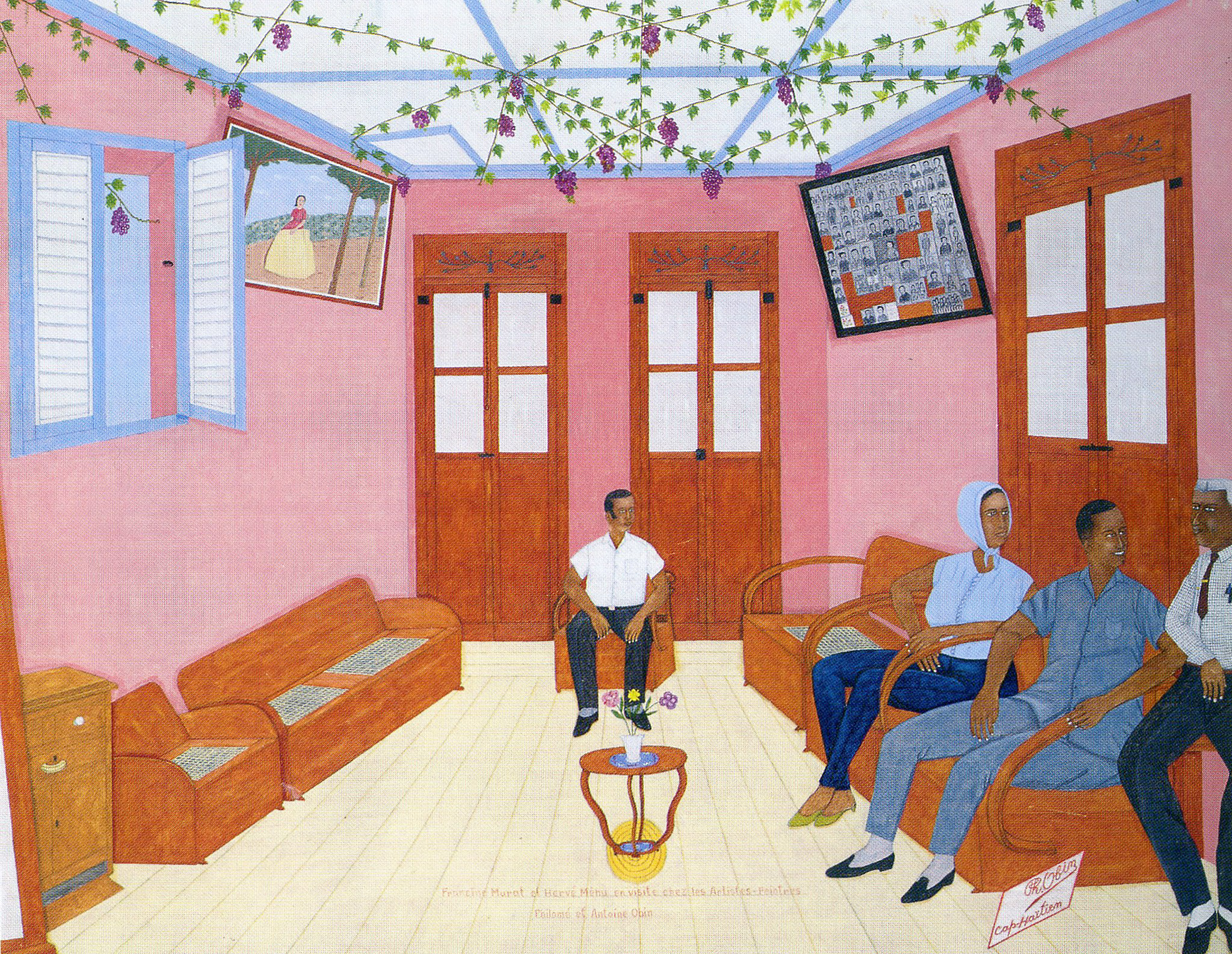
Francine Murat et Herve Mehu en Visite Chez les Artistes Peintres Philome and Antoine, n.d.
View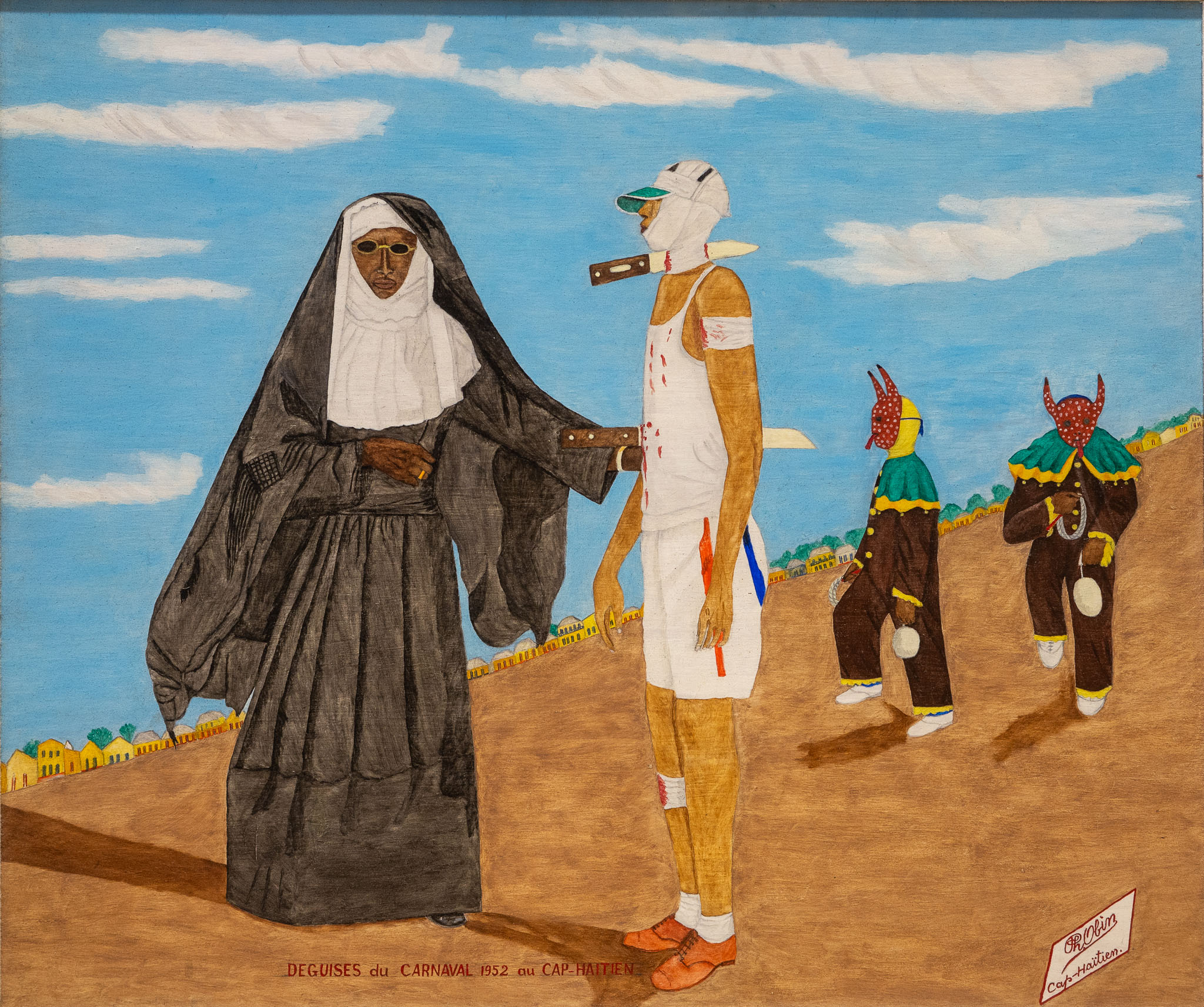
Deguises du Carnaval, 1952
View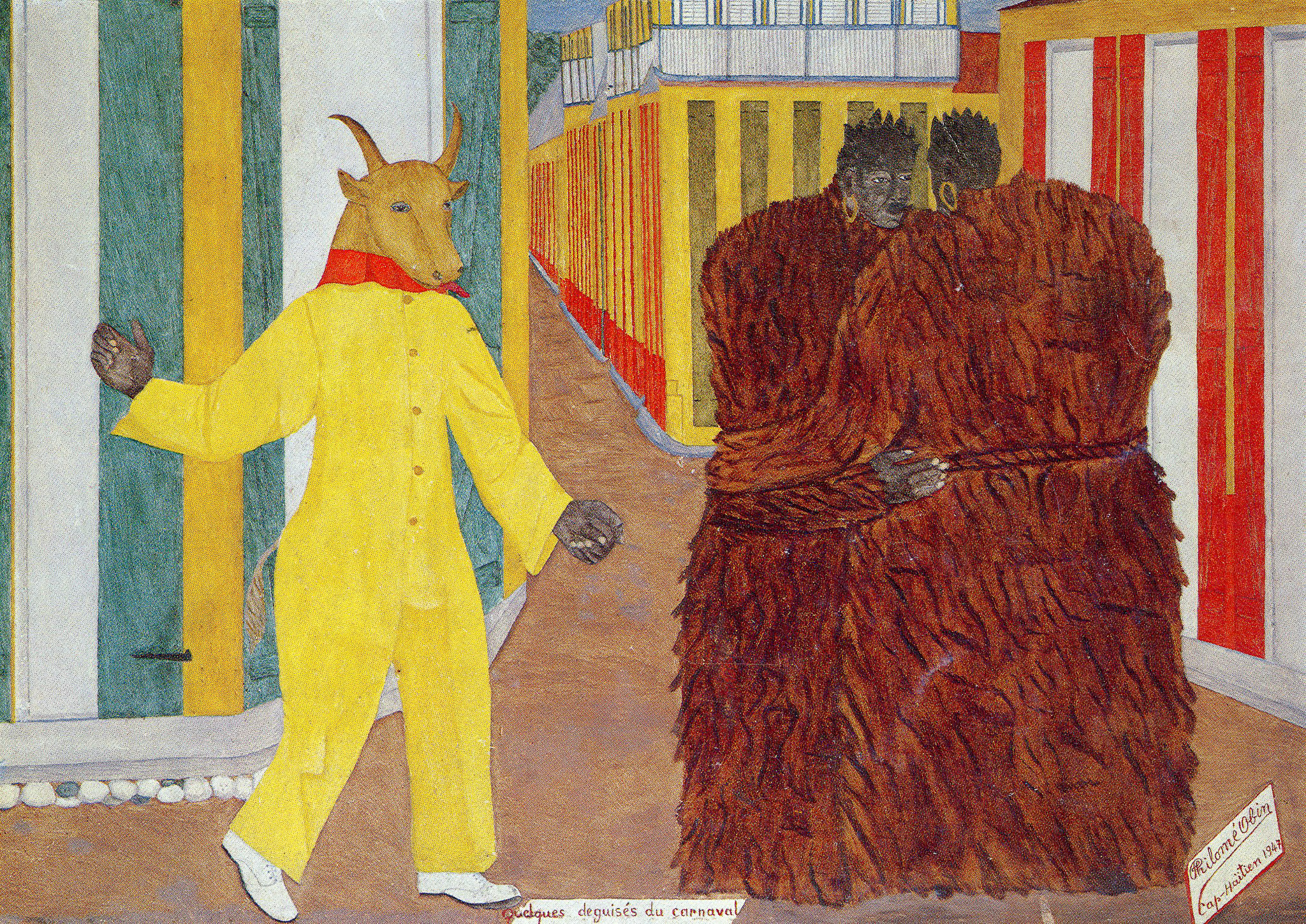
Quelques Deguises du Carnaval, 1947
View
On the Road to Carrefour des Peres, 1950
View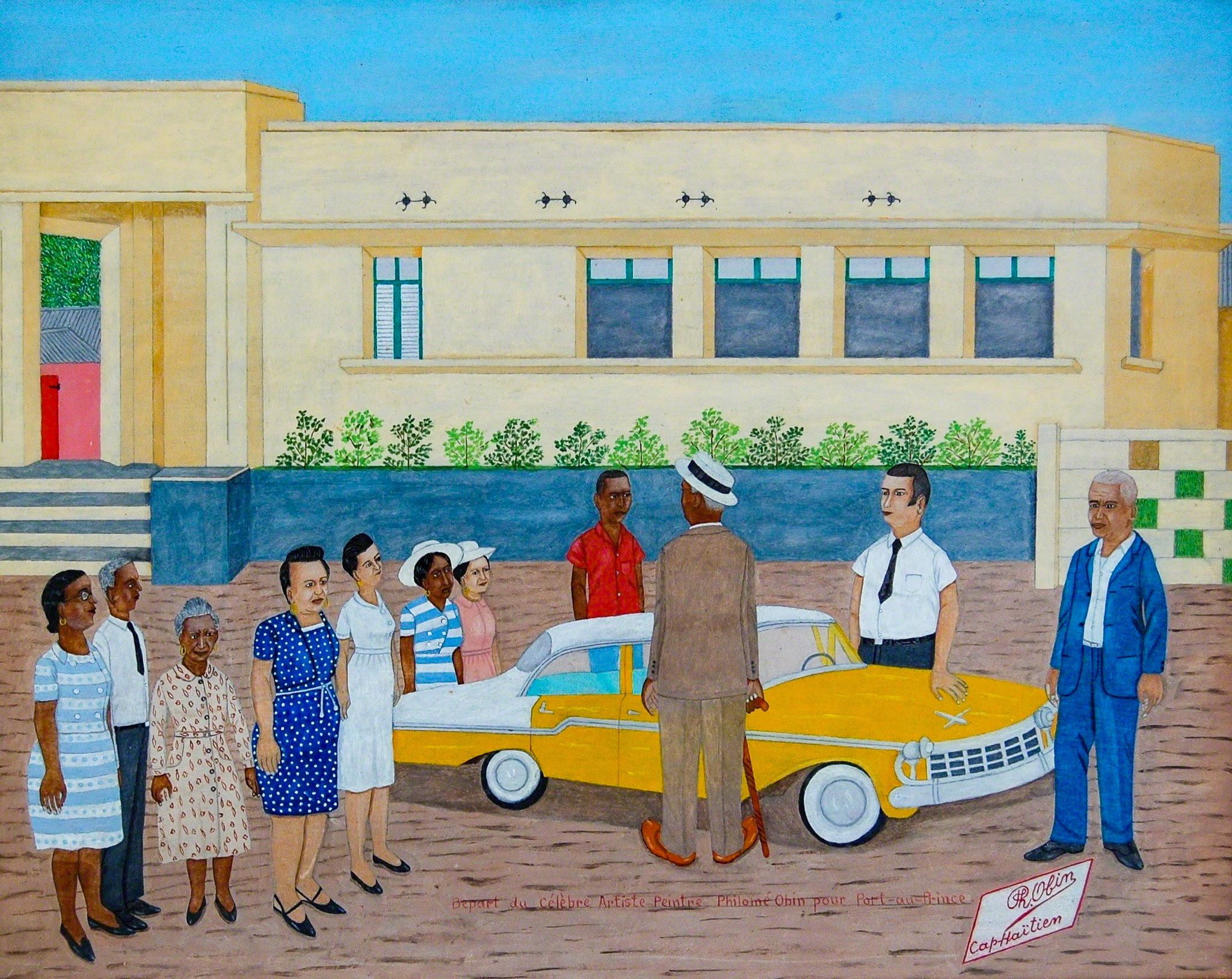
Depart du Celebre Artiste Peintre Philomé Obin pour Port-au-Prince, 1960s
View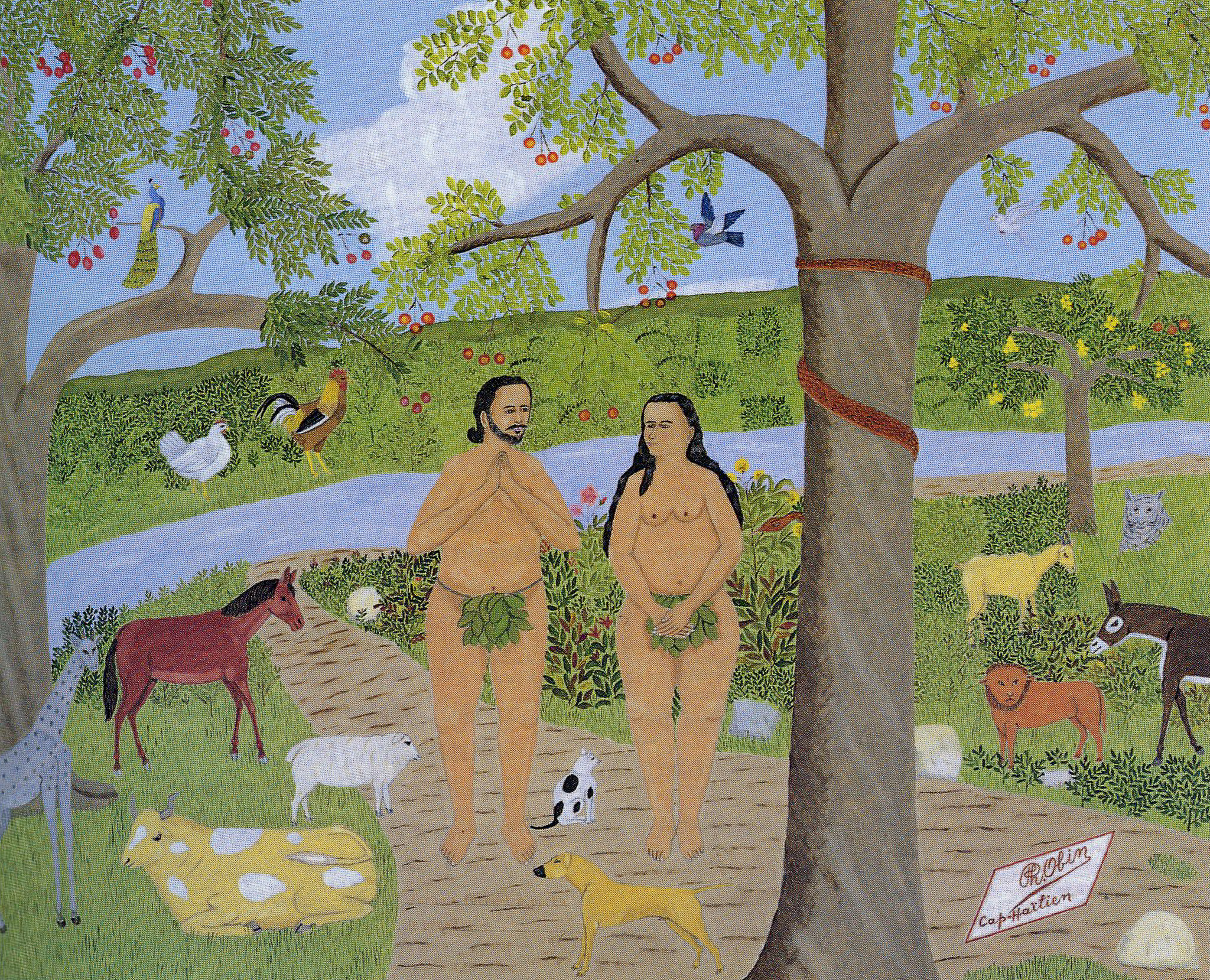
Paradis terrestre apres je peche, 1960
View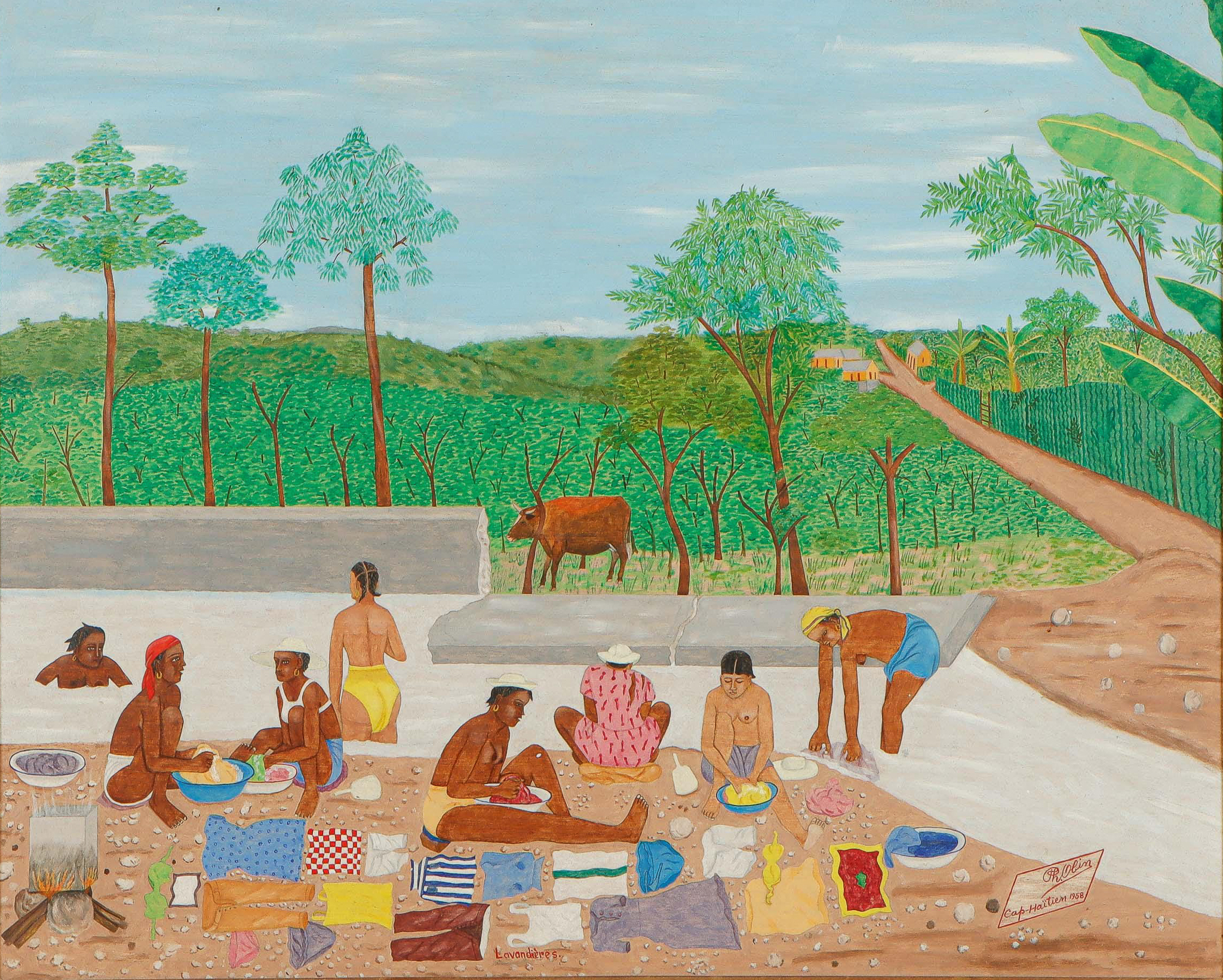
River scene, 1958
View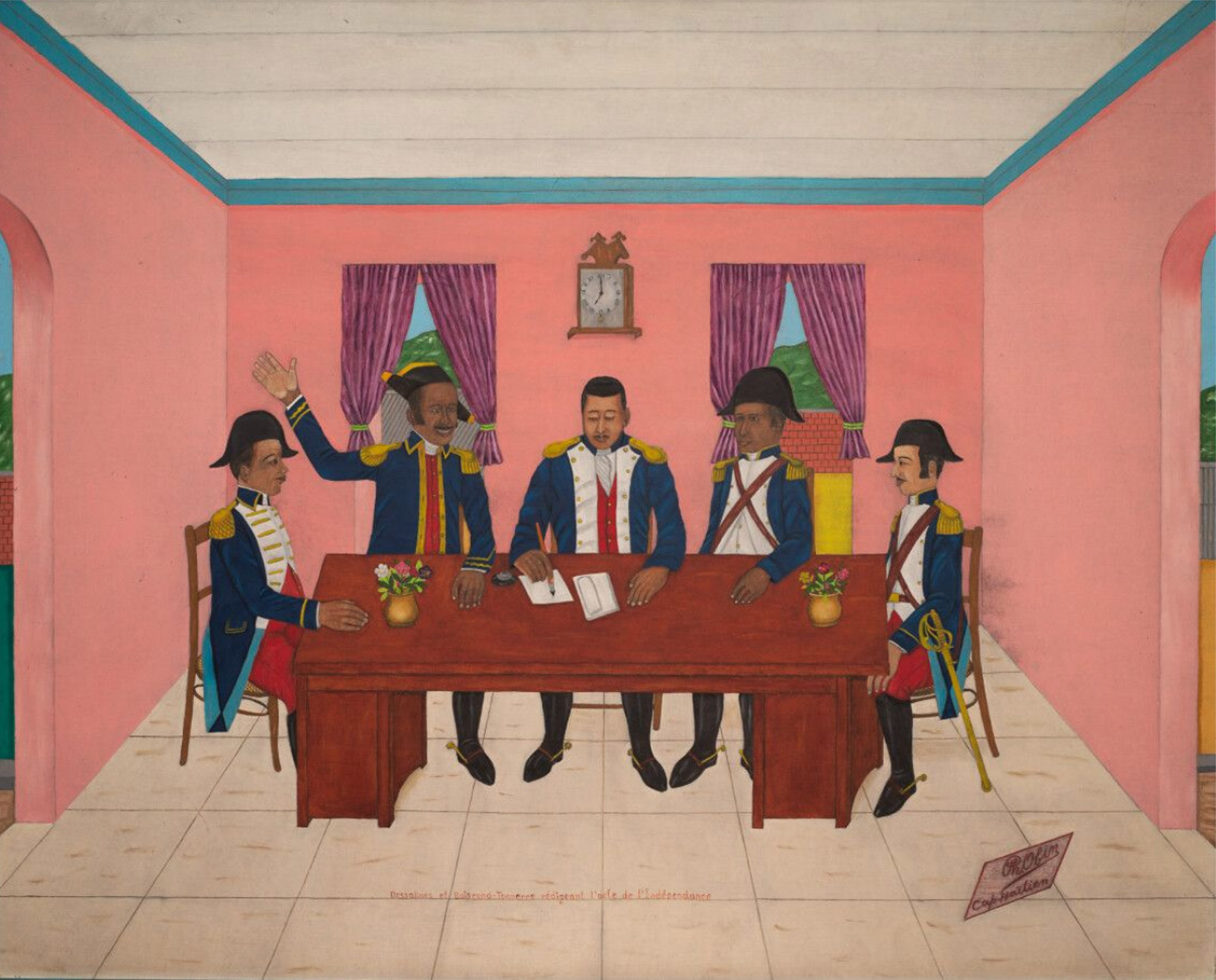
Dessalines and Boisrond-Tonnerre writing the act of independence, n.d.
View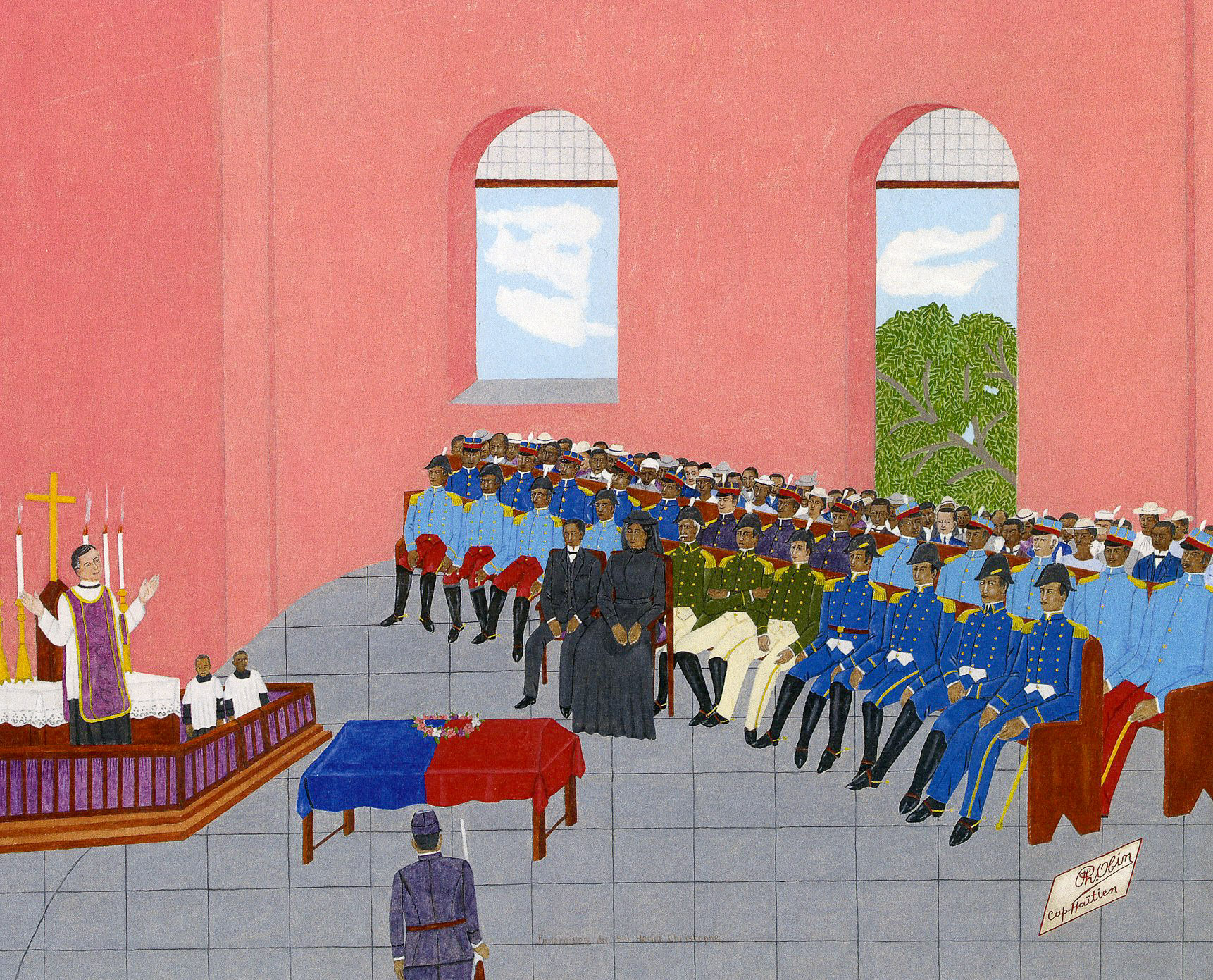
Funerailles du Roi Henri Christophe
View
Nativite, 1961
View
Un mardi de Carnaval, 1960
View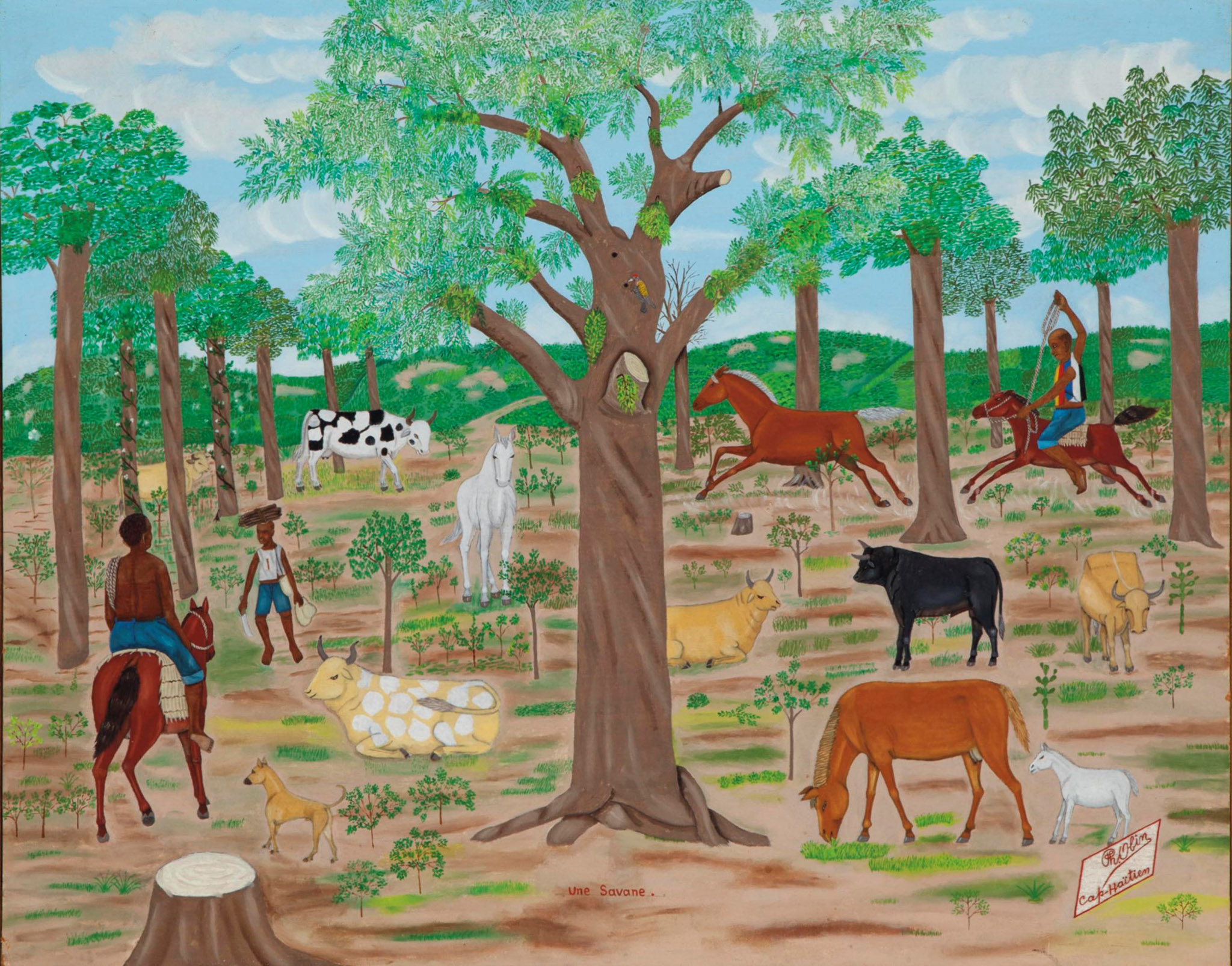
Une Savane, n.d.
View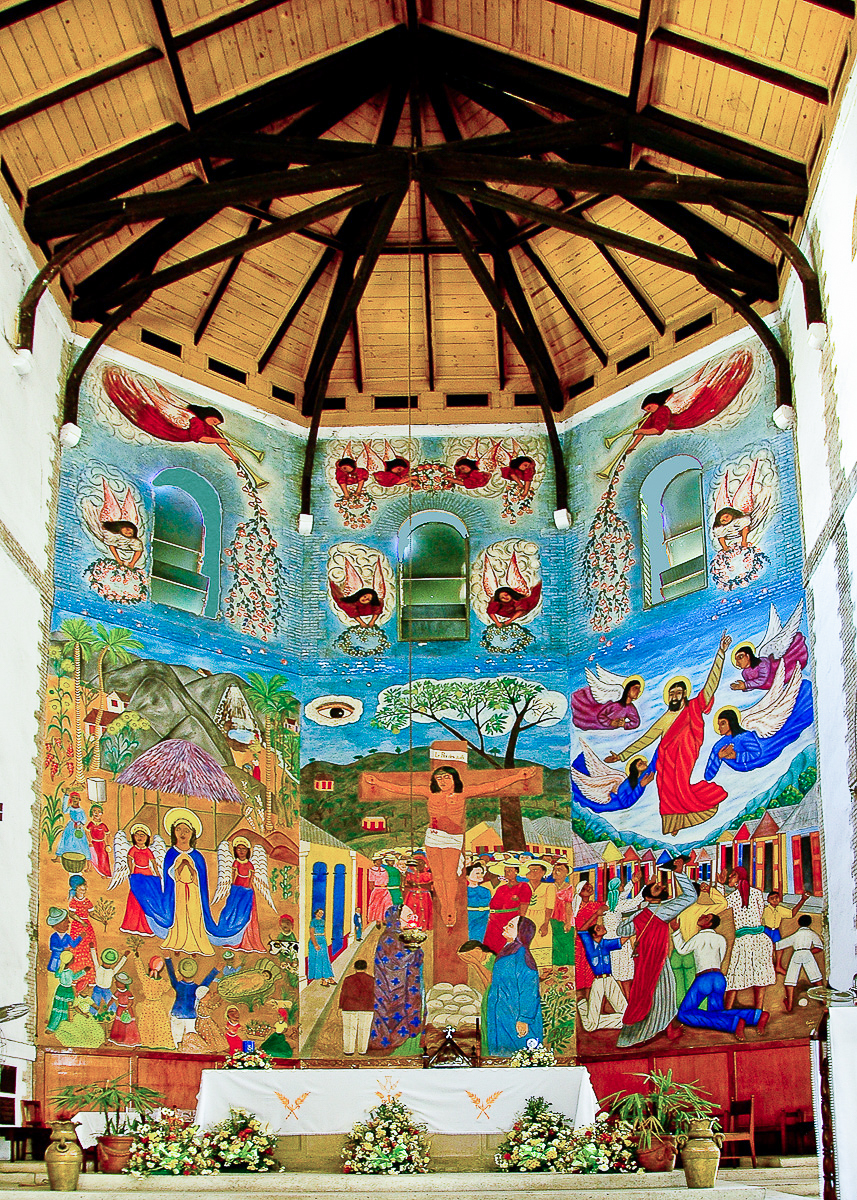
Apse at Holy Trinity Cathedral, 1950
View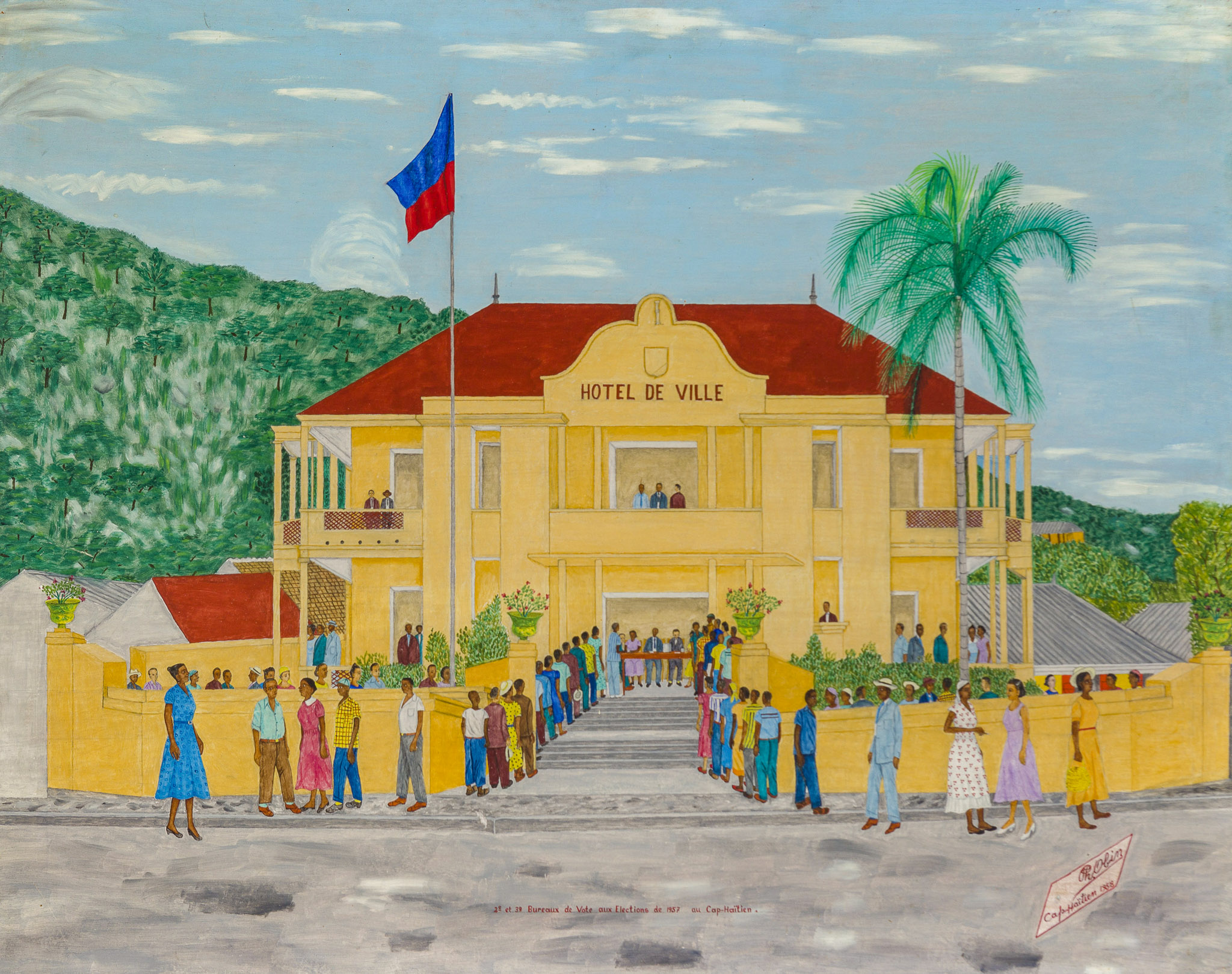
Bureaux de Vote aux Elections de 1957 au Cap-Haitien, 1958
View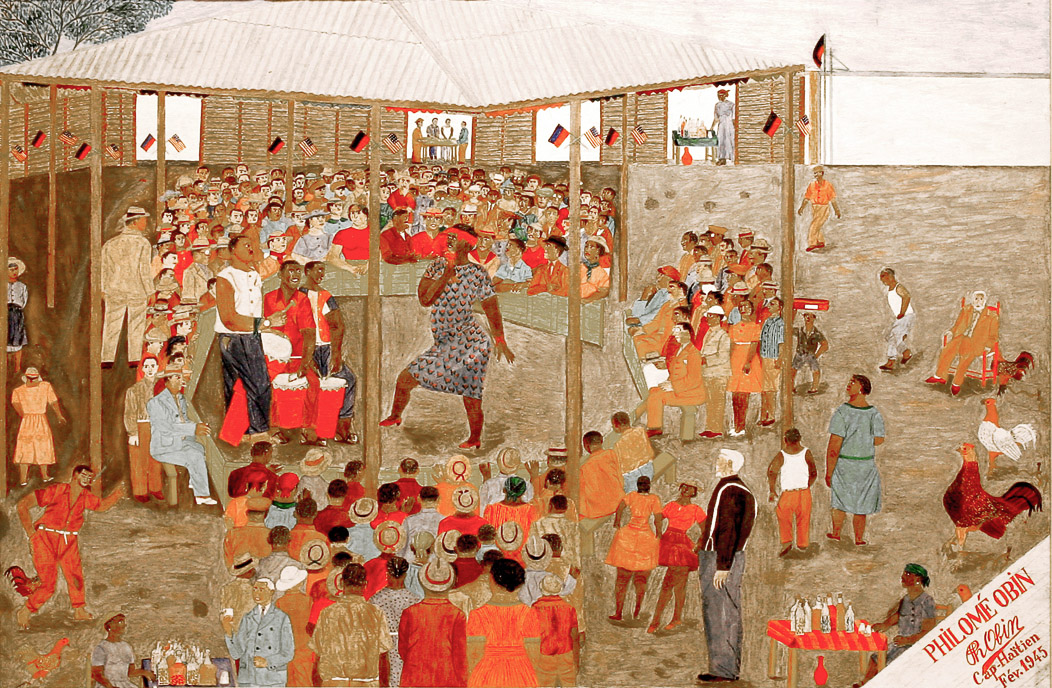
Singer Ti-Cile at Cockfight, 1945
View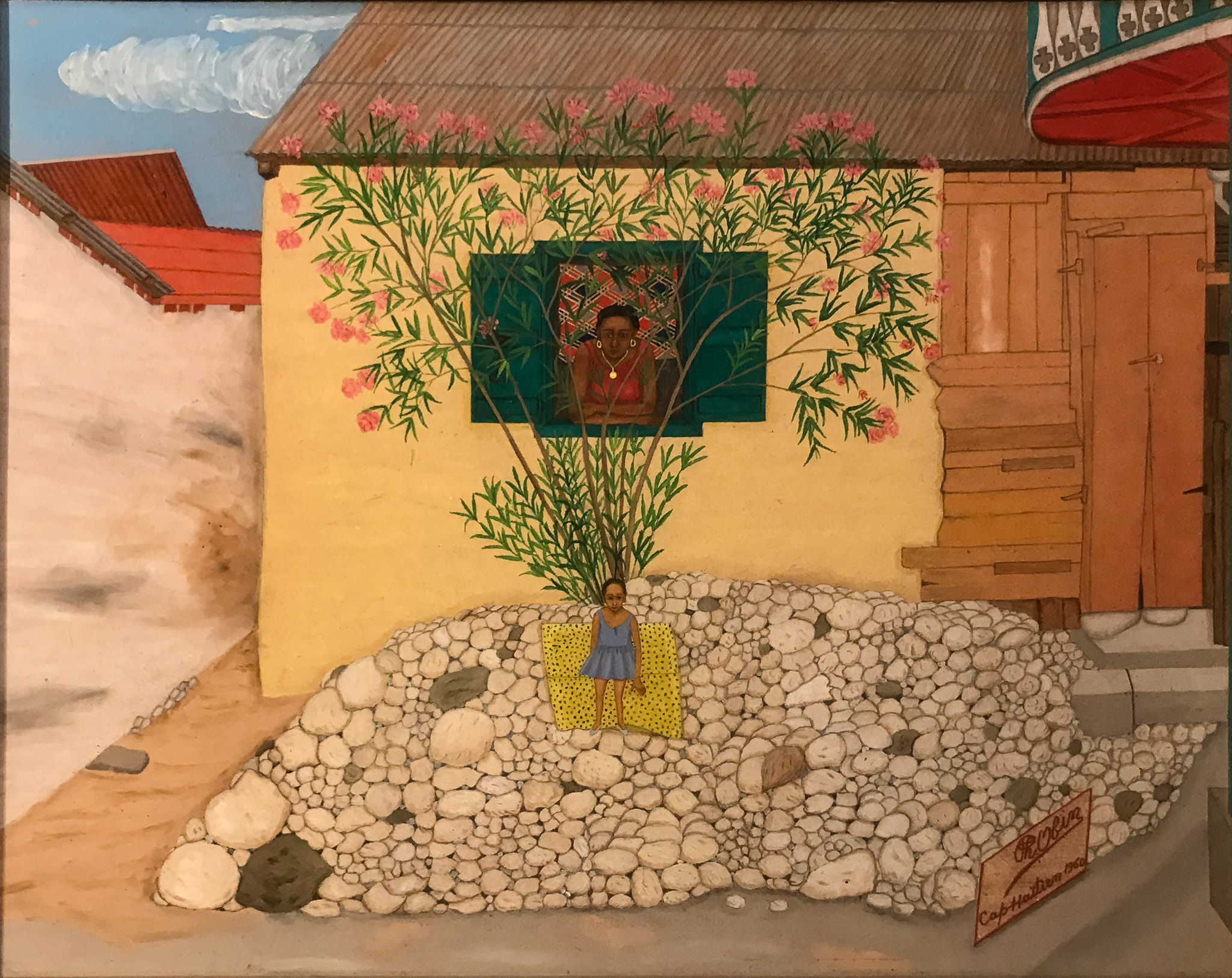
Untitled (Child in garden), 1960
View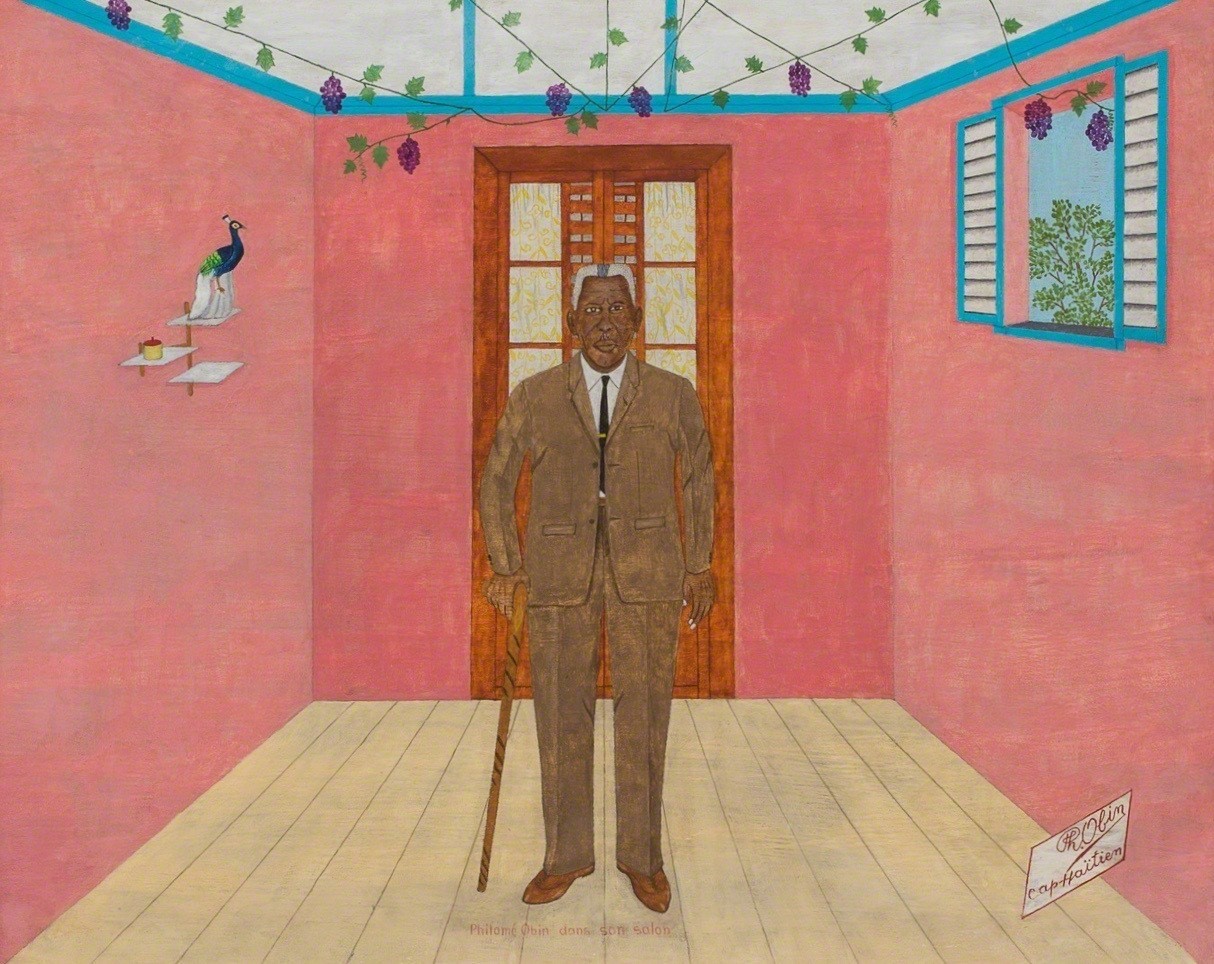
Philome Obin dans son salon, 1970s
View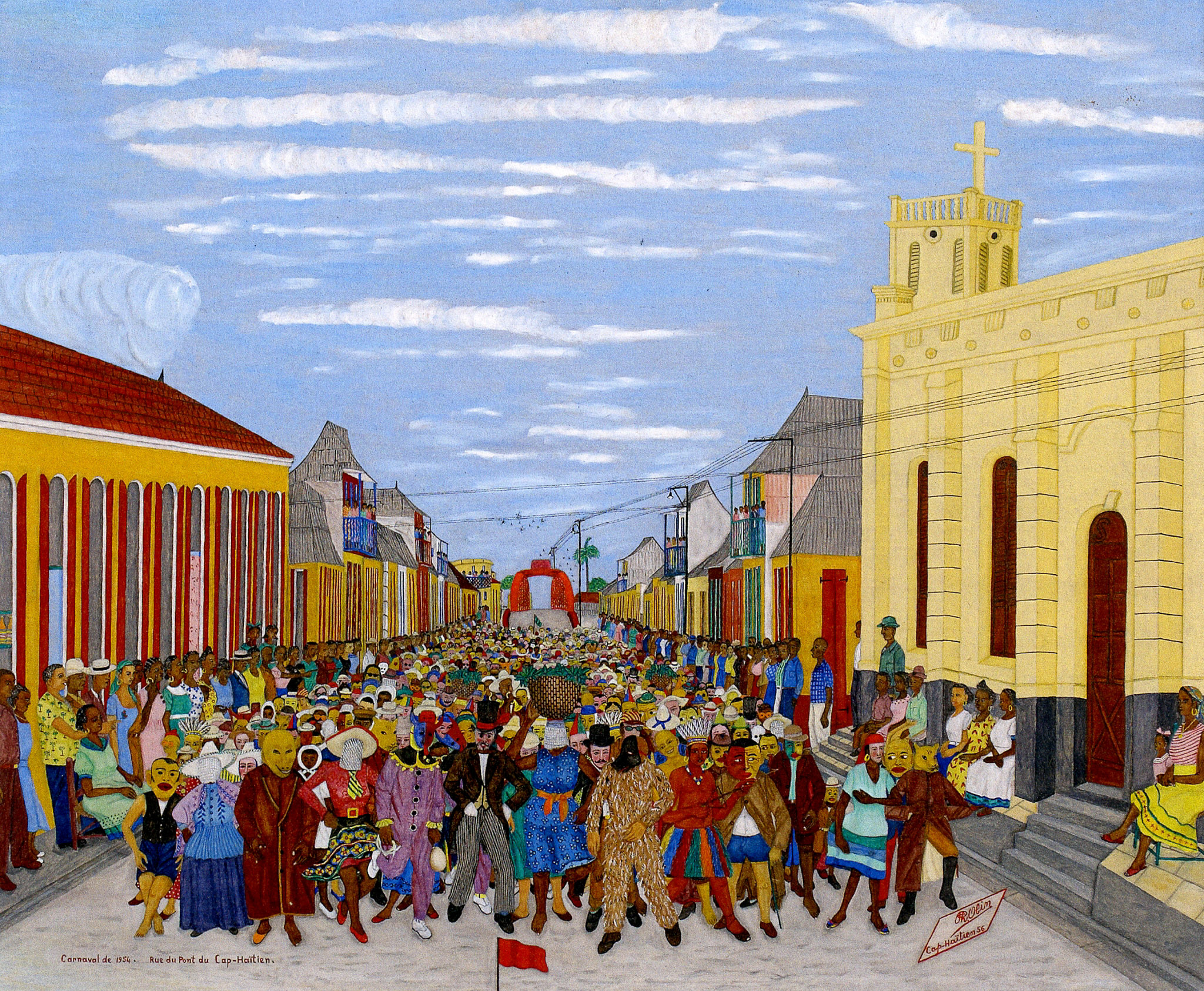
Carnaval de 1954 Rue du pont Cap-Haitien, 1956
View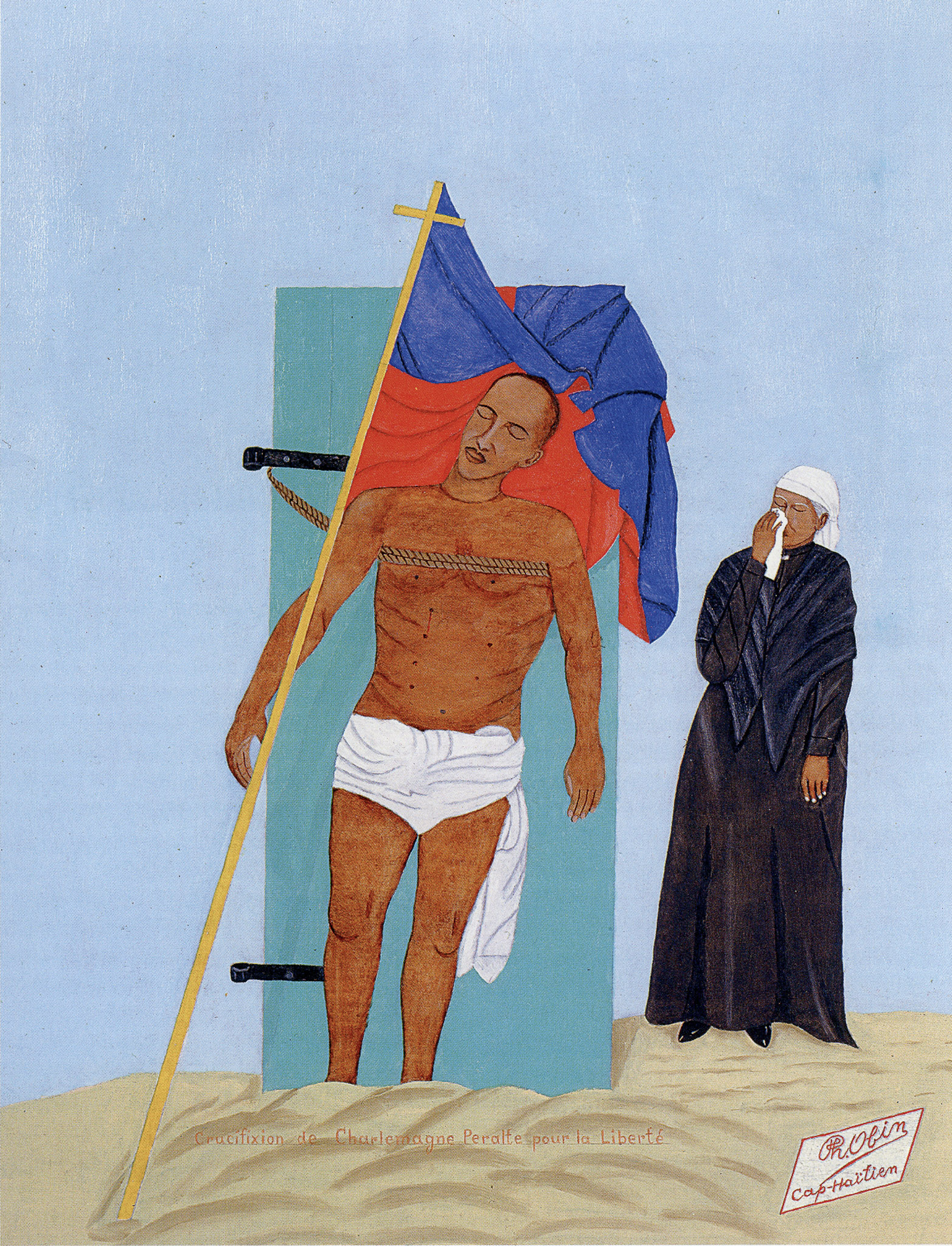
The Crucifixion of Charlemagne Peralte for Freedom, 1970
View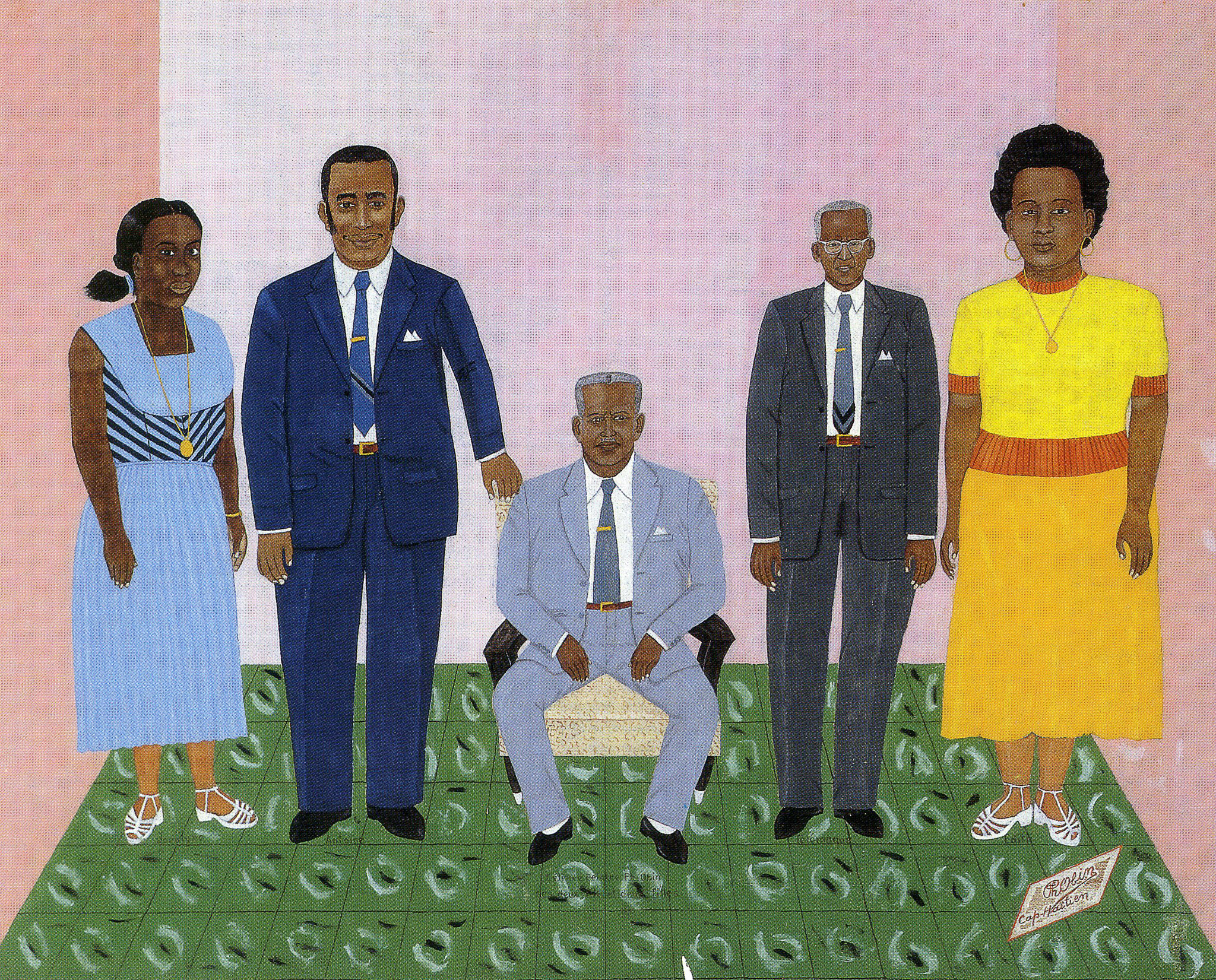
Self Portrait with Family
View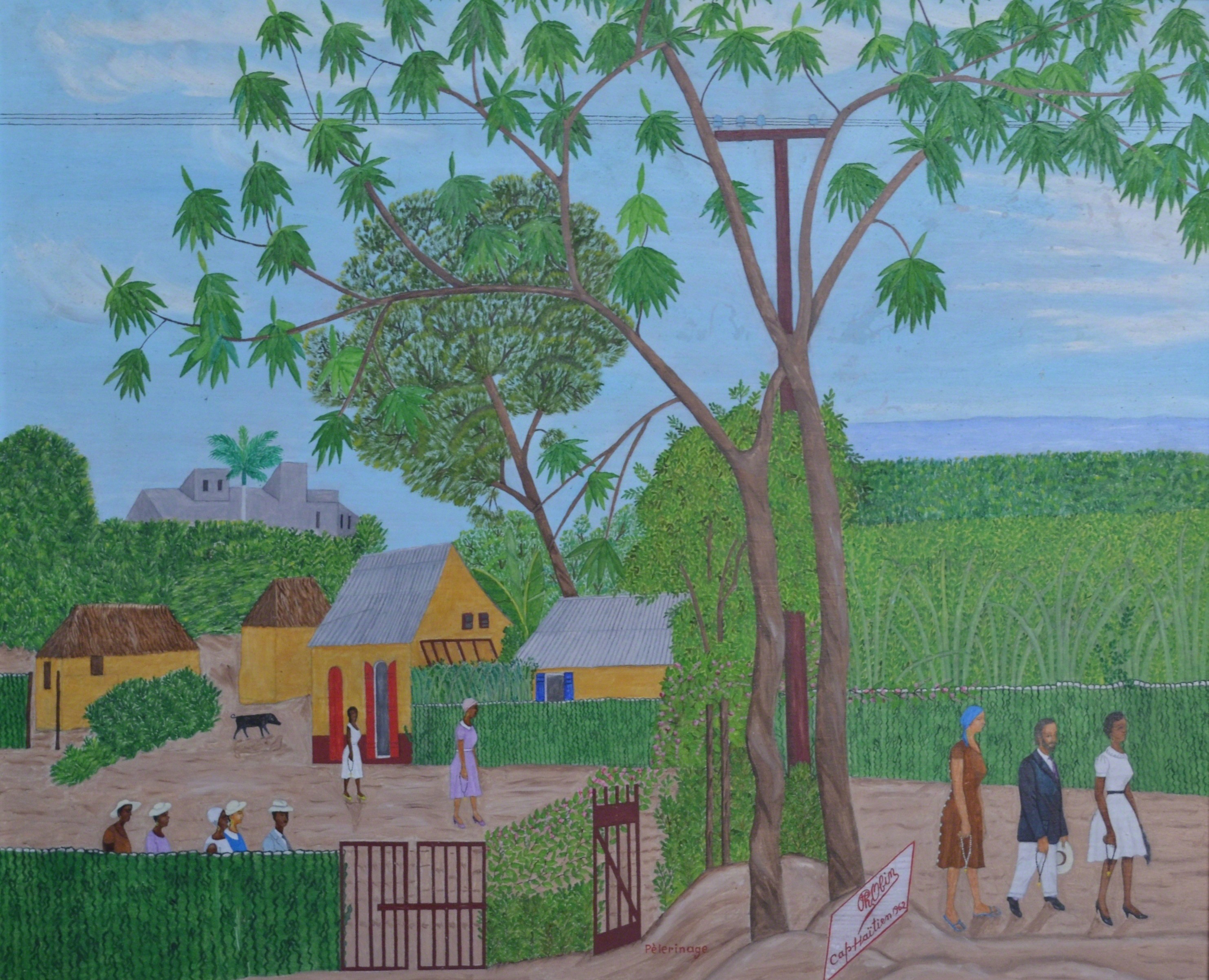
Pilgrimage
View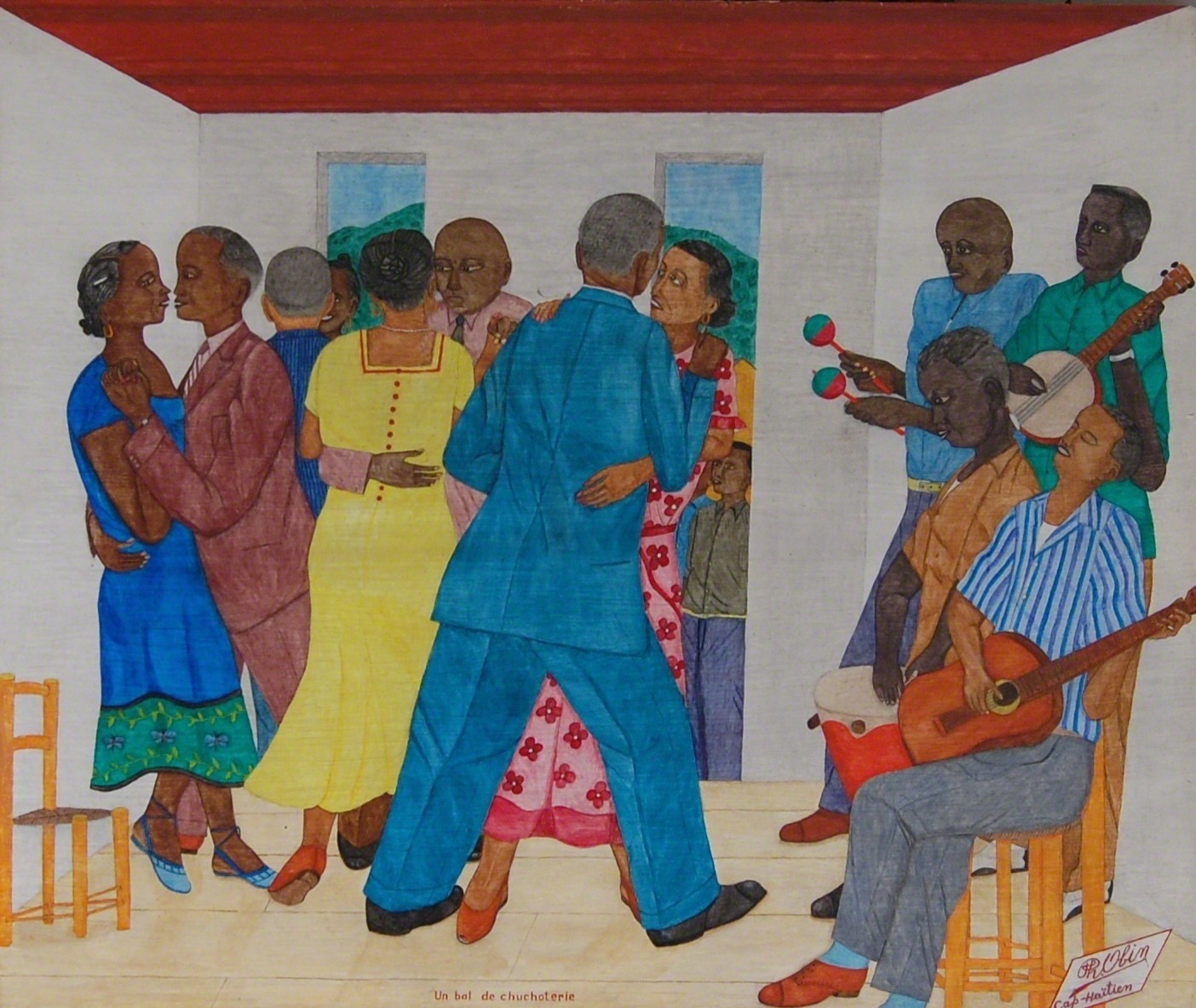
Dance of the Whispers, 1955
View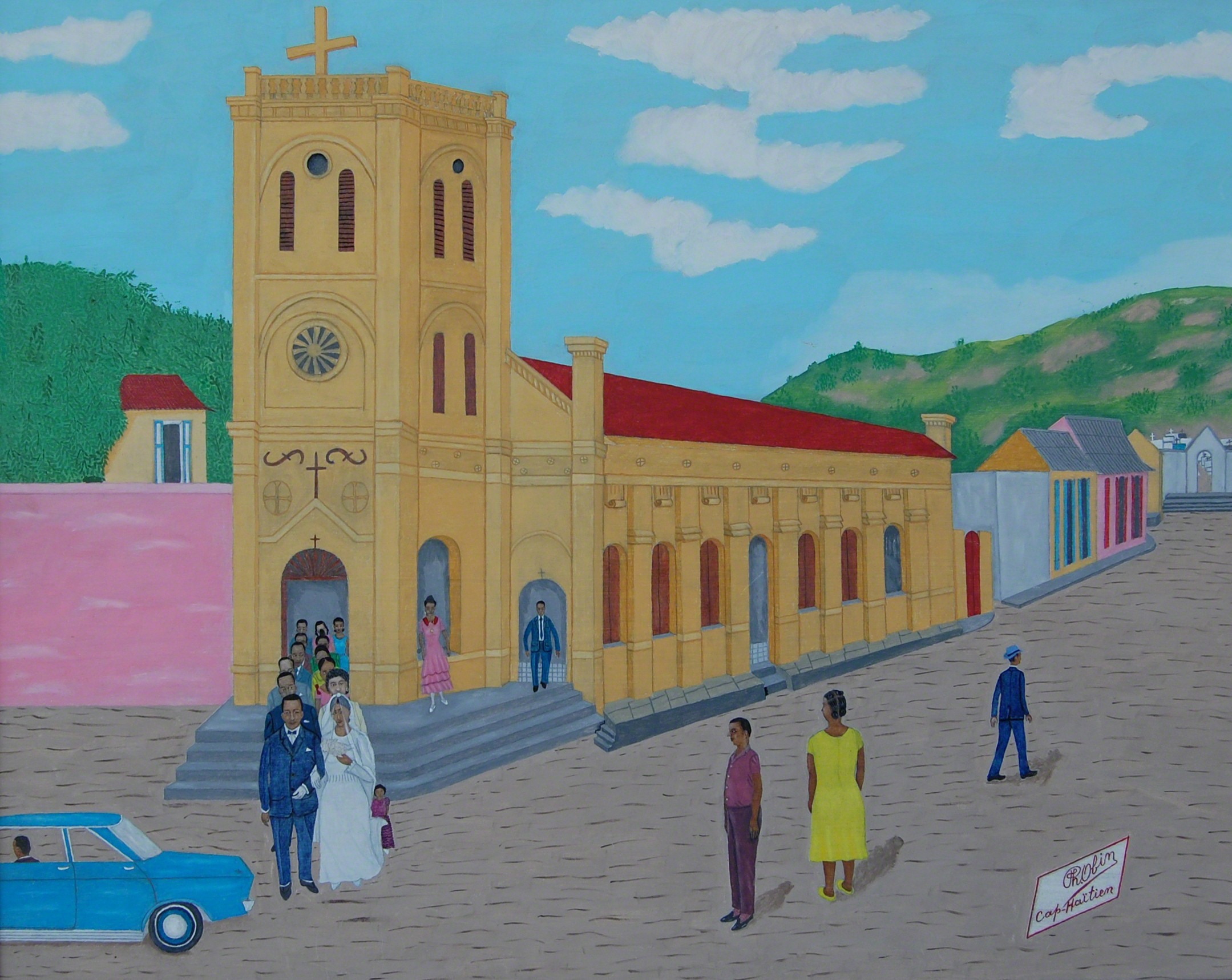
Wedding in Cap-Haitien, 1955-65
View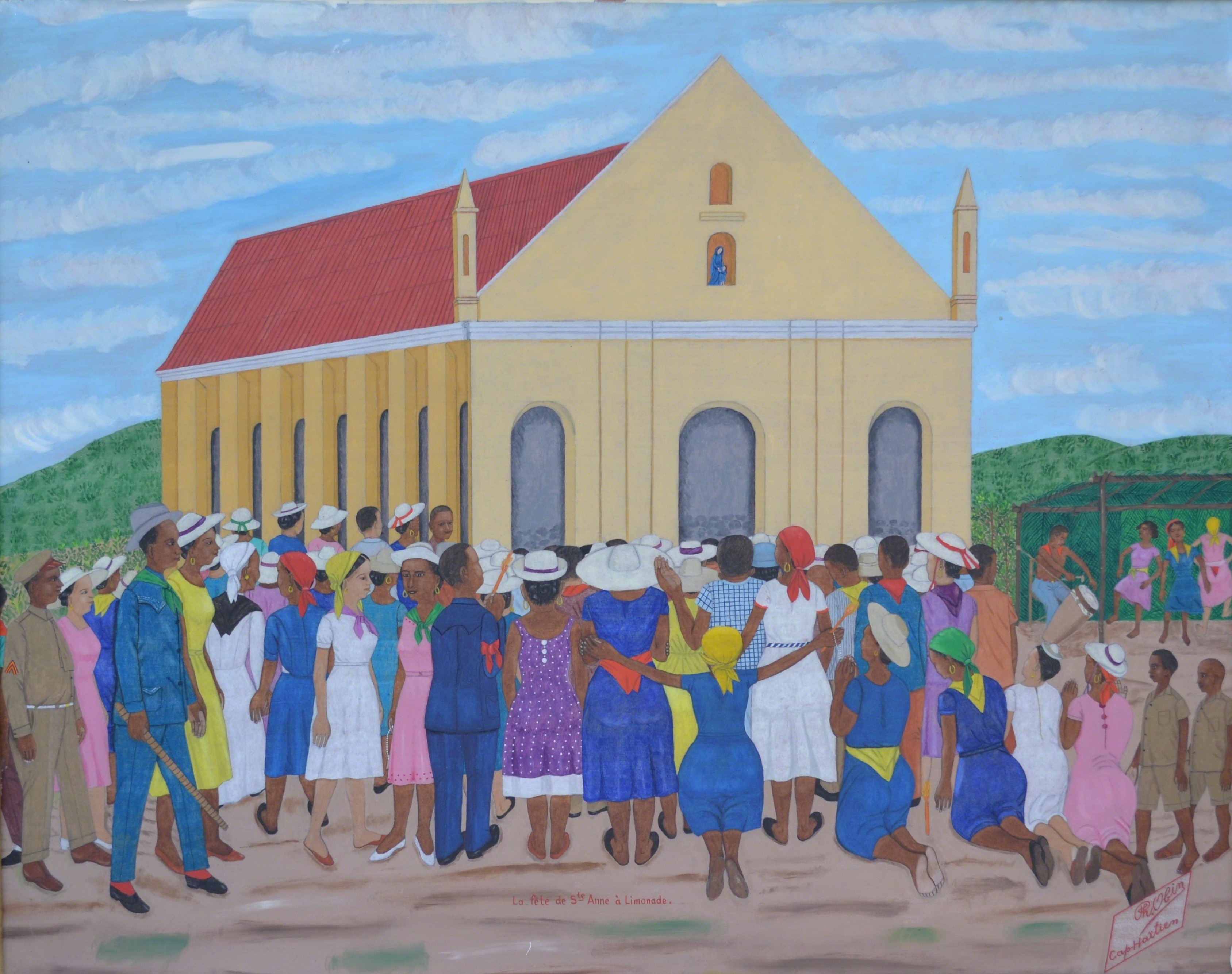
La Fete de Ste. Anne Limonade, 1950-55
View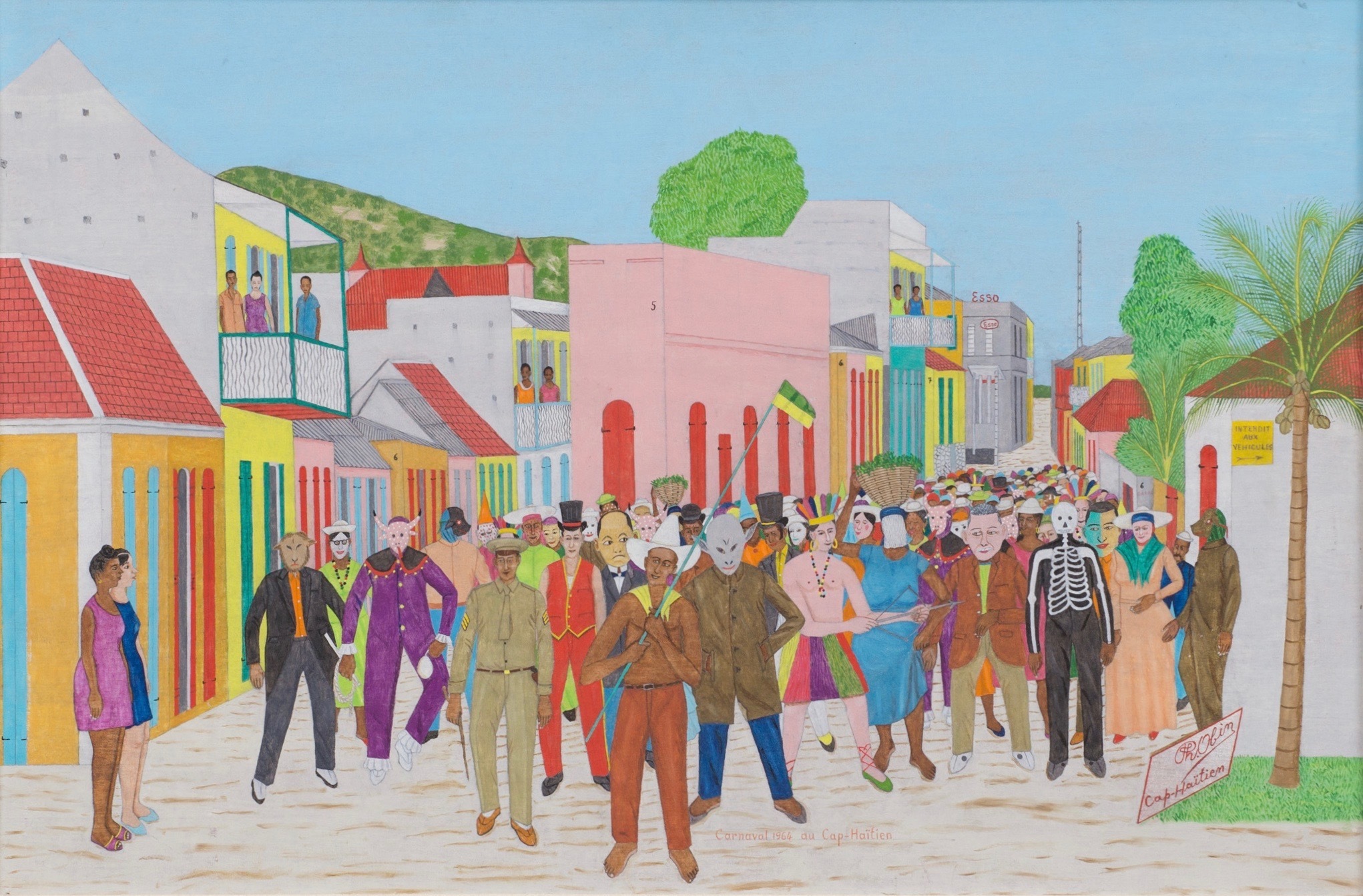
Cap-Haitien Carnival, 1964
View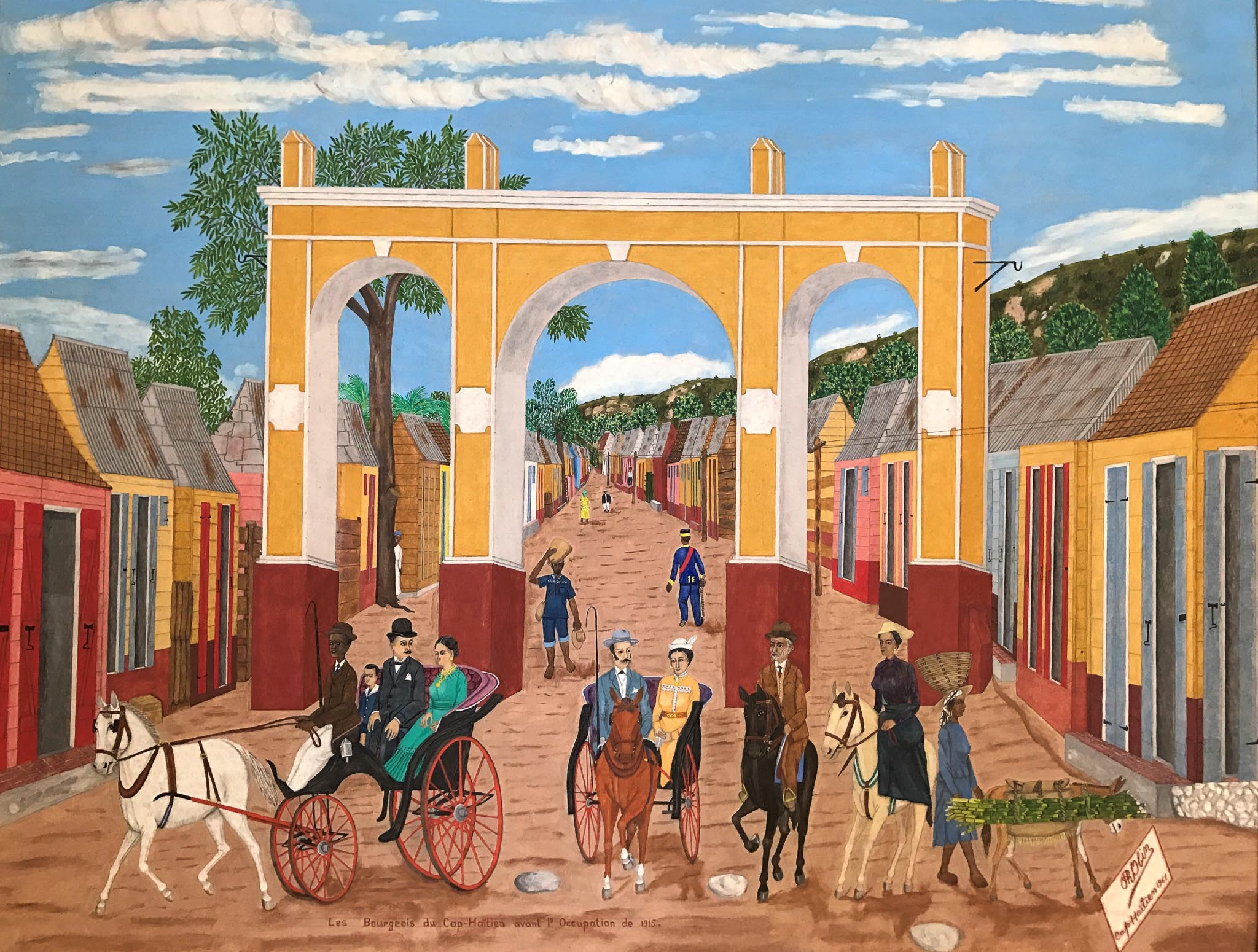
The Bourgeoisie of Cap-Haitien Before the Occupation of 1915, 1961
View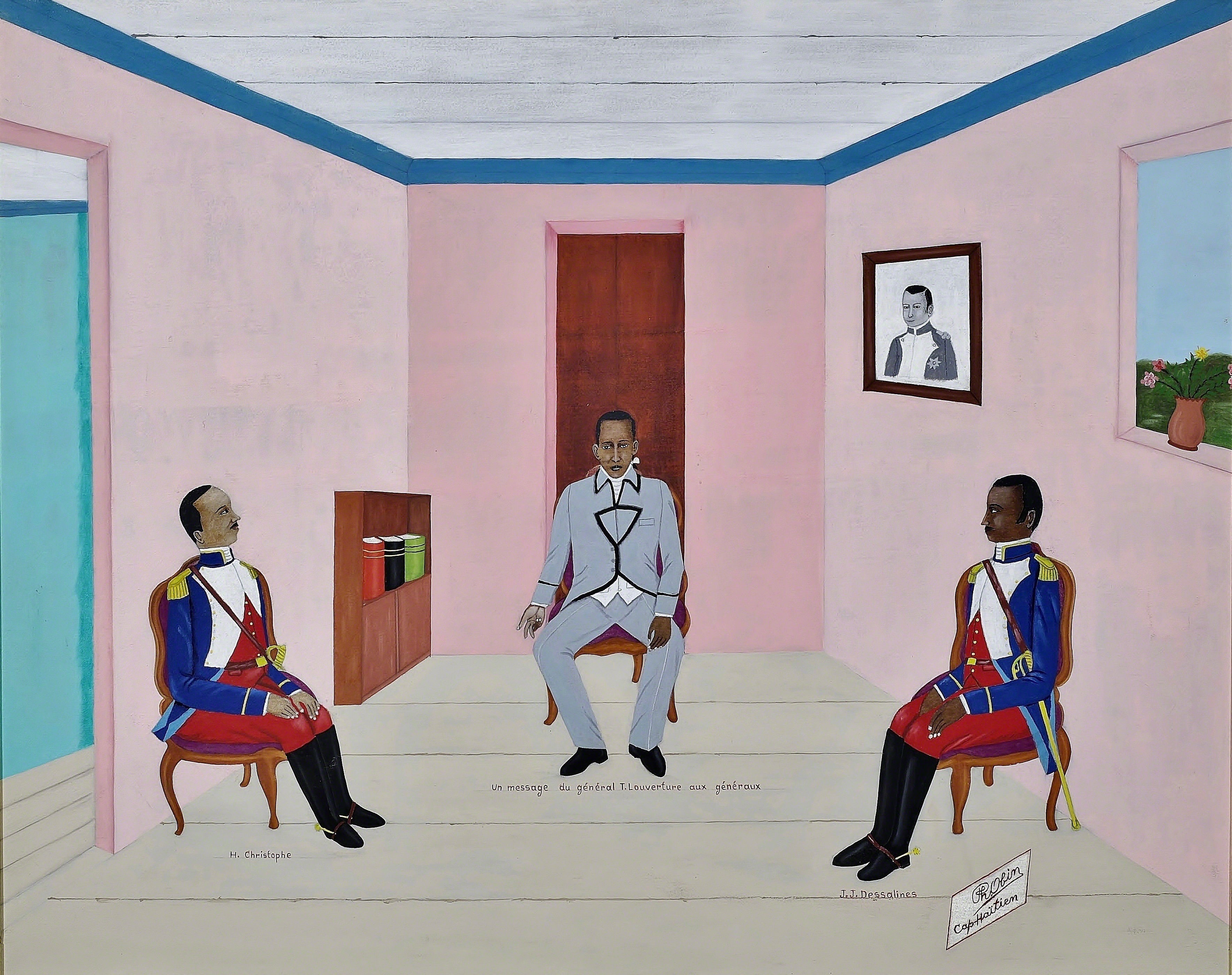
A Message from General Toussaint Louverture to the Generals
View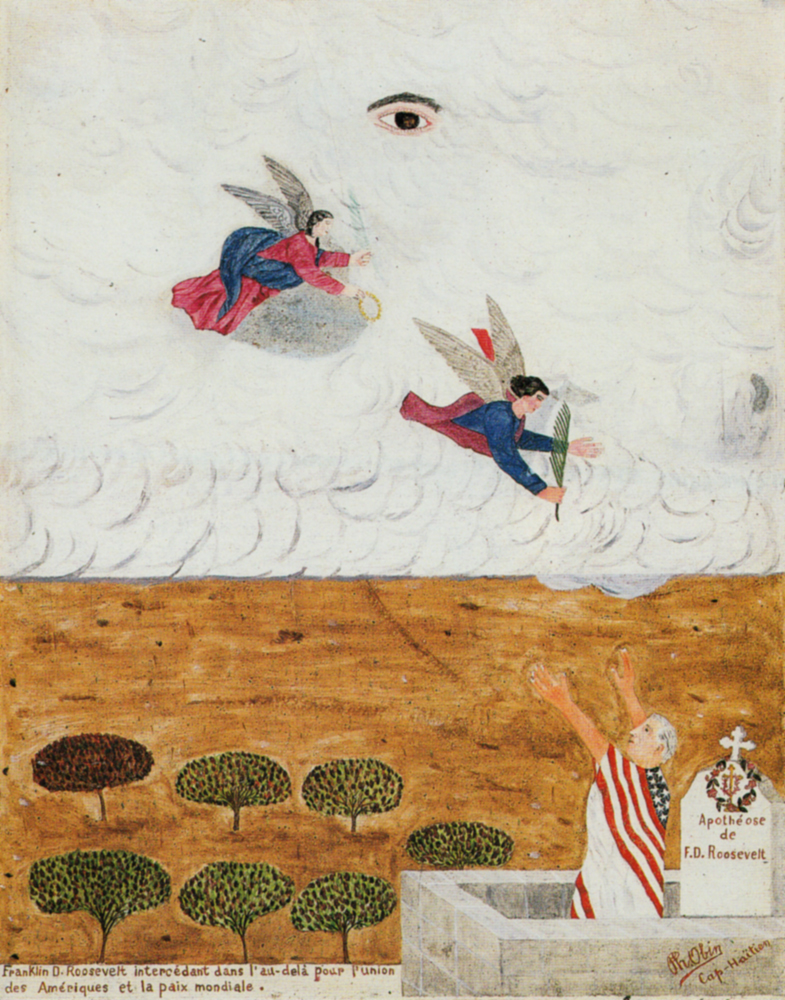
Franklin D. Roosevelt Interceding in the Beyond for the Peace of the Americas, 1946
View
Visite du Président F.D. ROOSEVELT au Cap Haïtien, 1944
View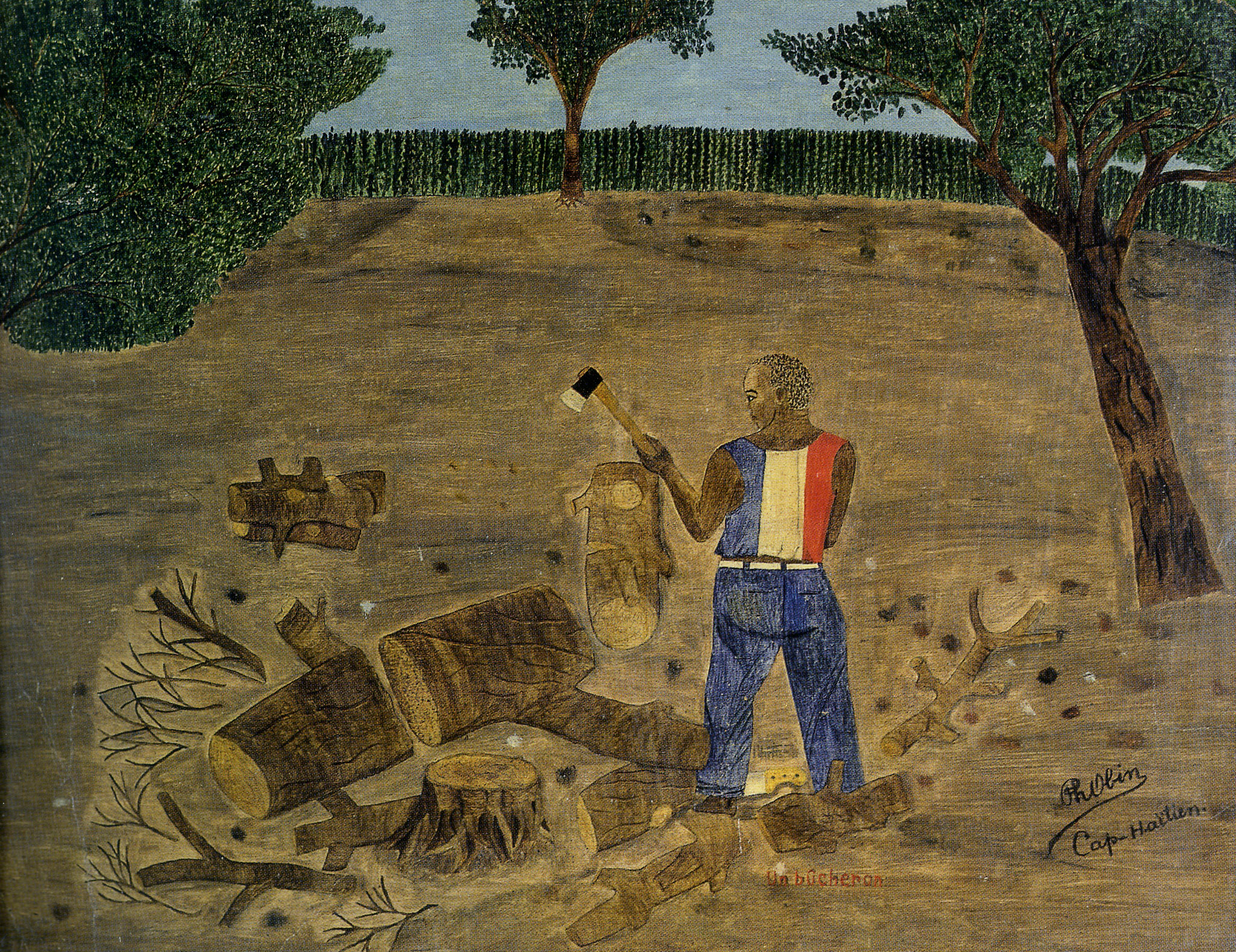
Un bucheron (A lumberjack), 1945
View
Skirmish between the men of Gal Valev St. Amour, 1961
View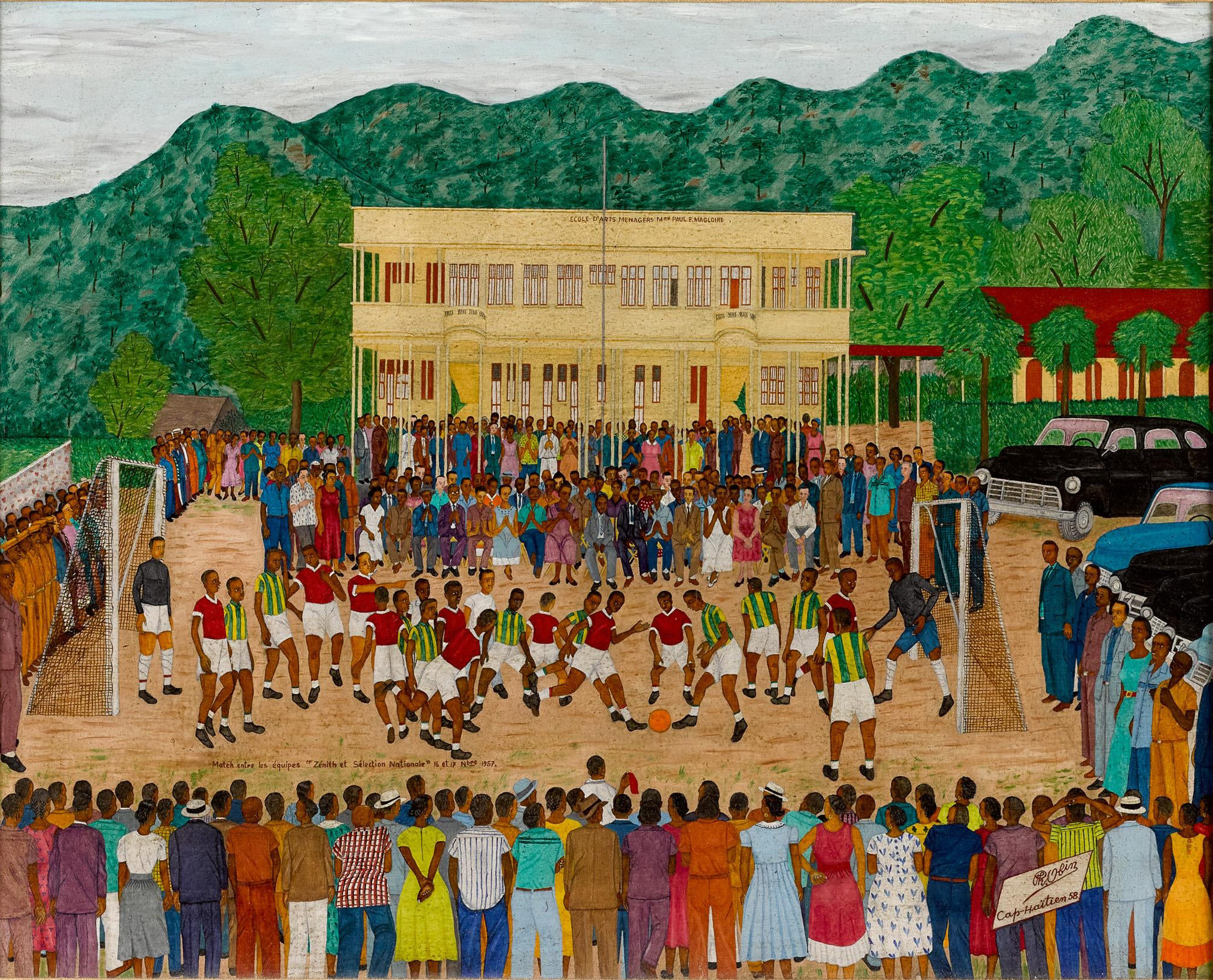
-2.jpg)
